April 28, 2019
Martha O'Kennon
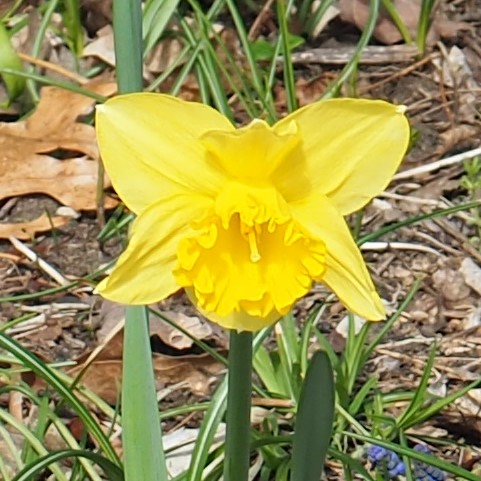
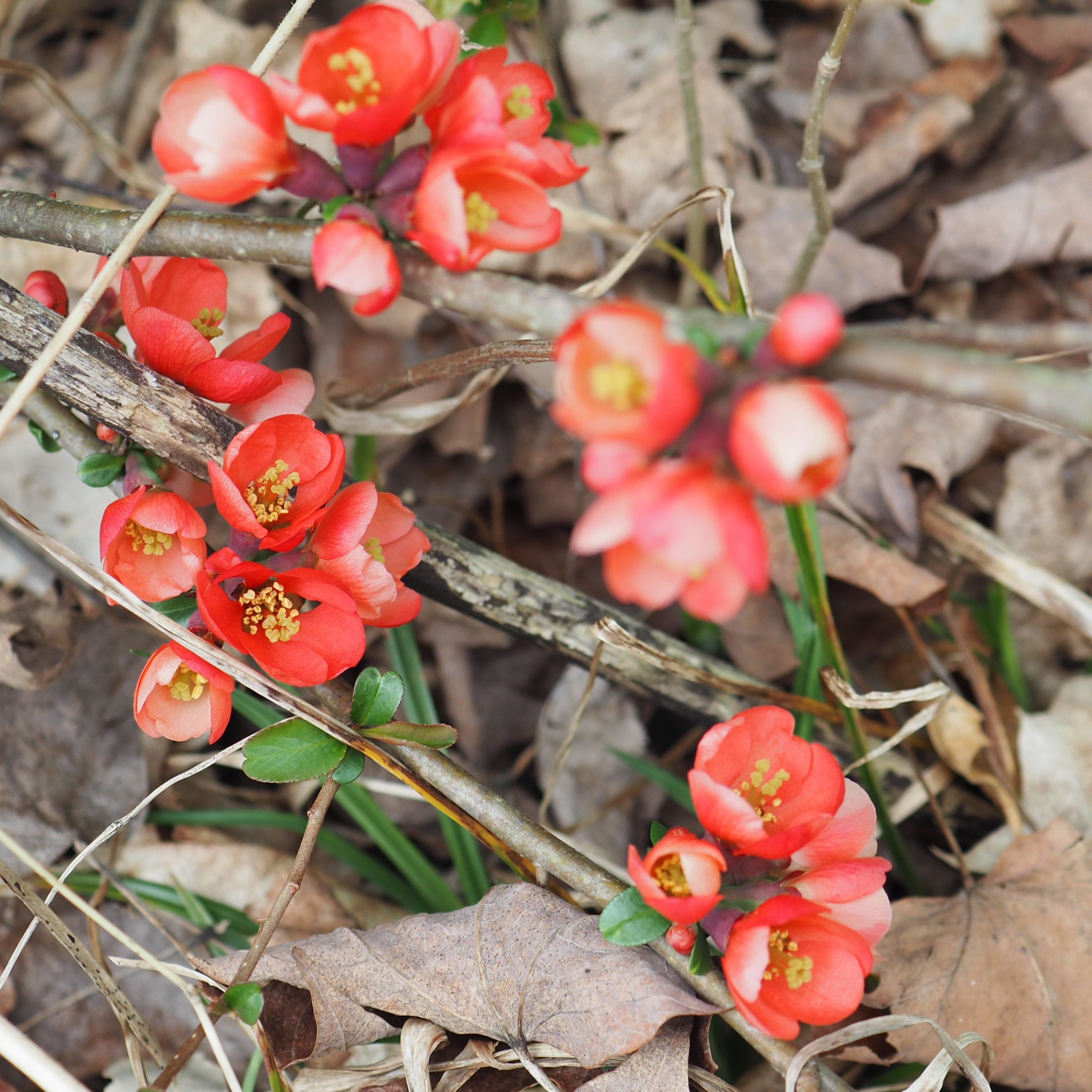
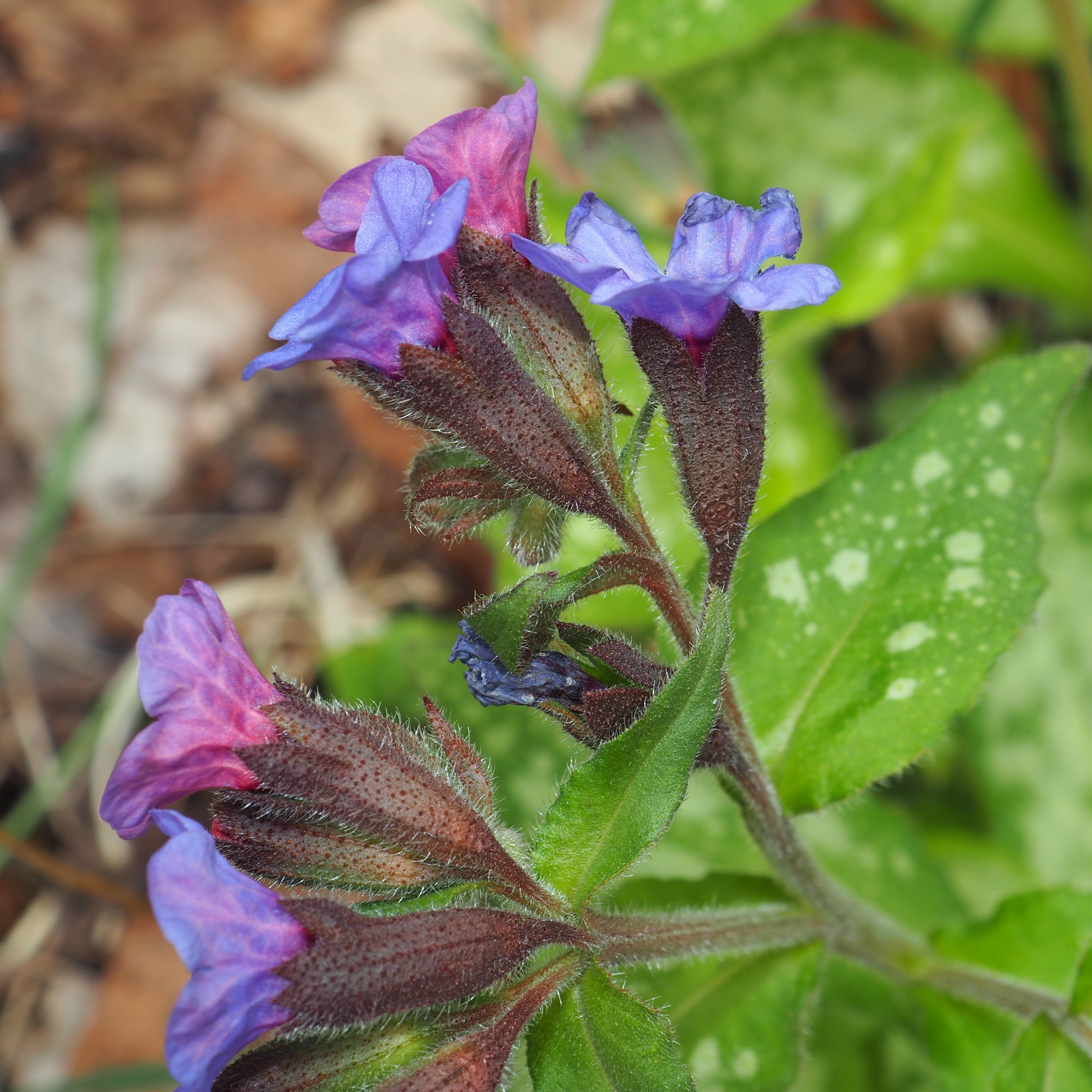
Yellow Daffodil (note the singular - that's all I've got), orange Japonica, and pink and blue Pulmonaria. Each week, more colors to see when I look out the windows. You'll see more!
Remember that there is information in the name of the file for each image. You can see it by mousing over the image - look at the lower left of the screen. Or you can click on the image to get to the (usually) larger image. Then the info is displayed in the address line above. Sometimes the second click will actually display a different view of the original image.
We had a good show from the ants on the wall this week. An old friend, the Eastern Black Carpenter Ant, with its signature tail of golden spiky hairs (setae), scampered along the siding. More often, it was its smaller cousin, the Smaller Carpenter Ant (Picture 3).
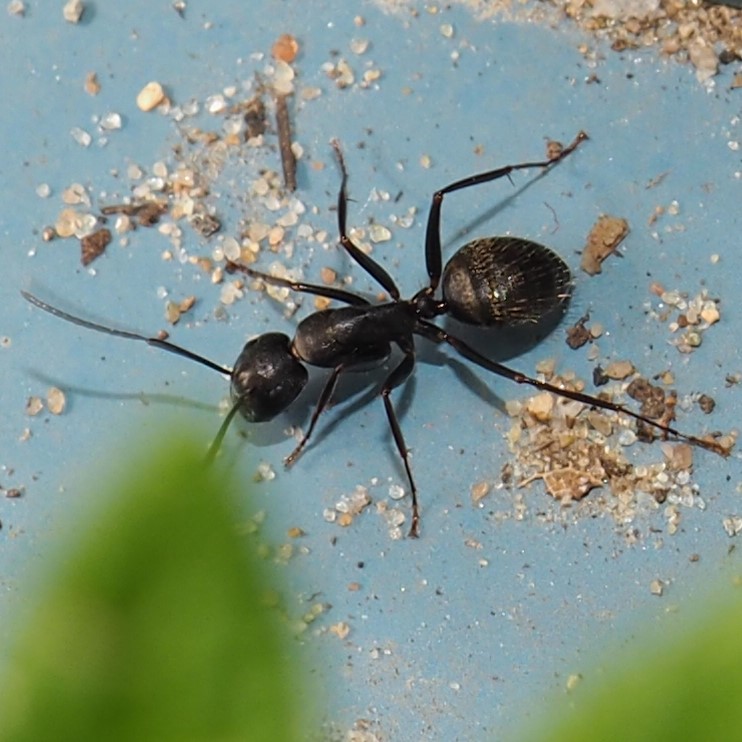
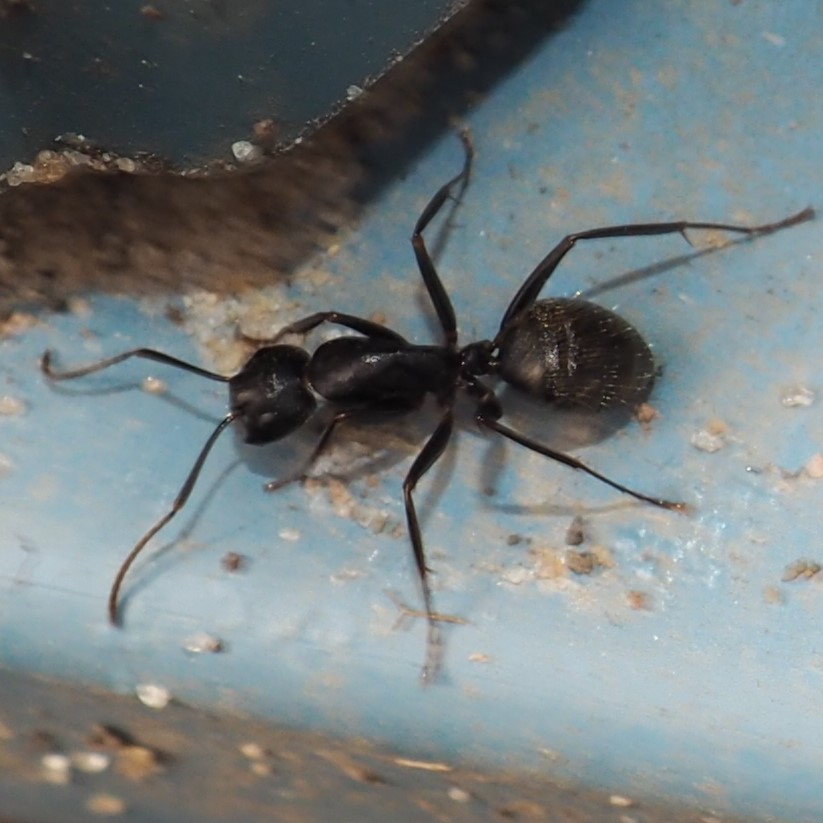
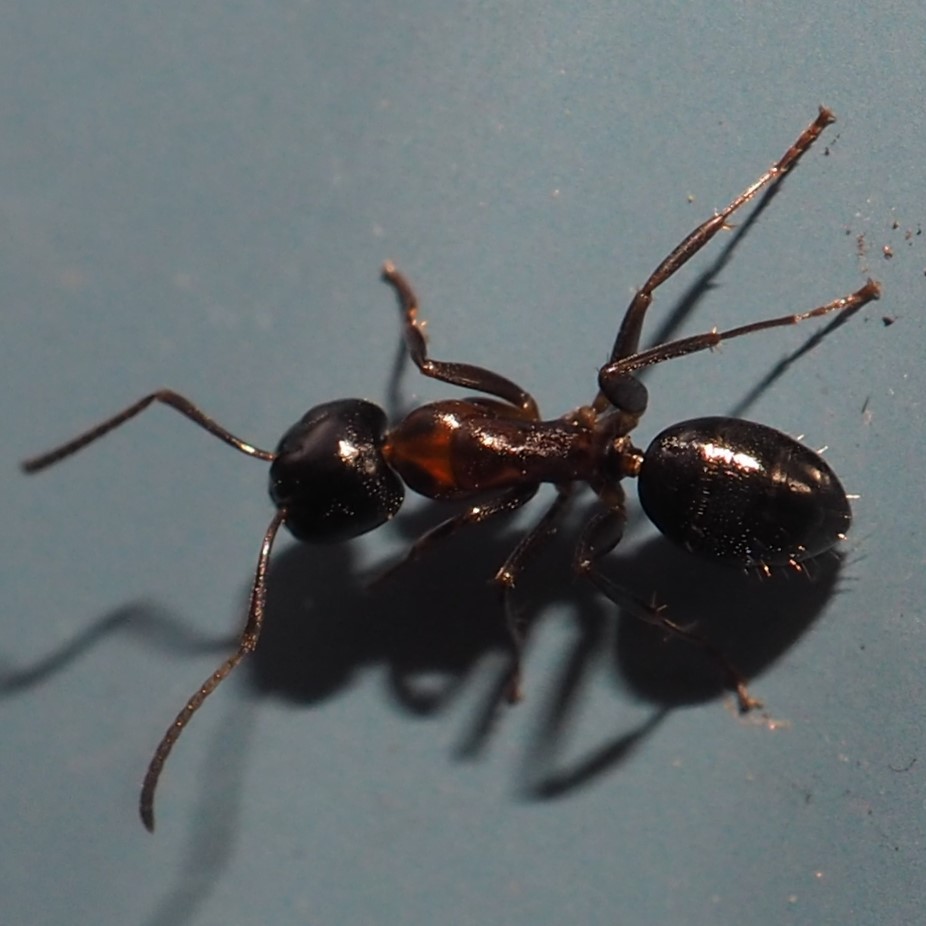
The most common of all were the Small Honey Ants, with their outsized pointed abdomens. Picture 2 shows a couple of them around their nest out front - note these are the workers, infertile females. Picture 3 shows a winged black male. He isn't much bigger than the workers, but I cropped this picture to show him up better.
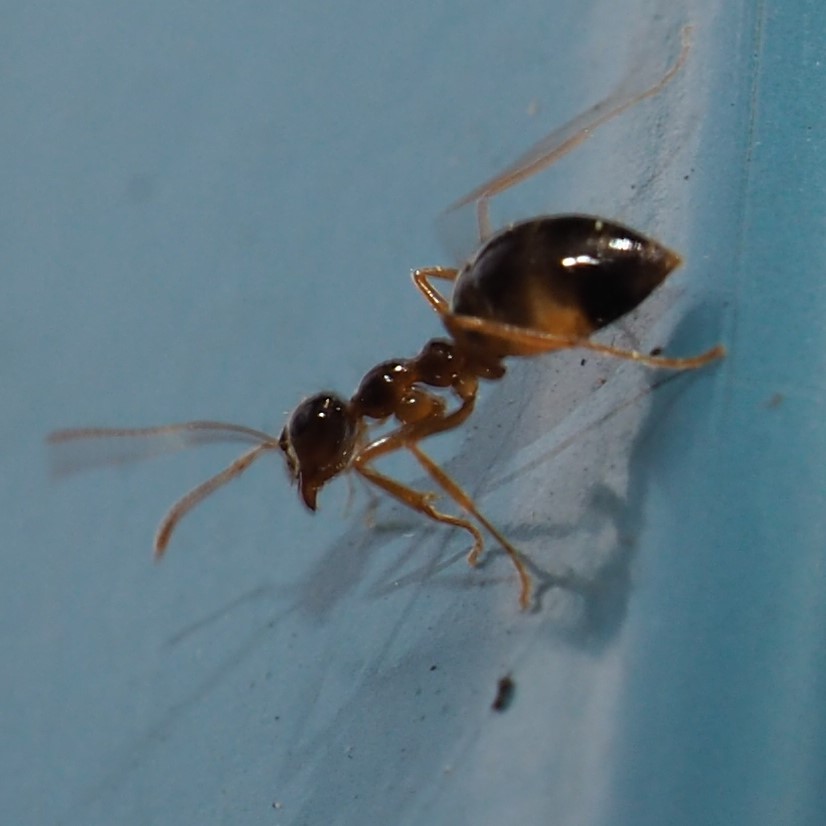
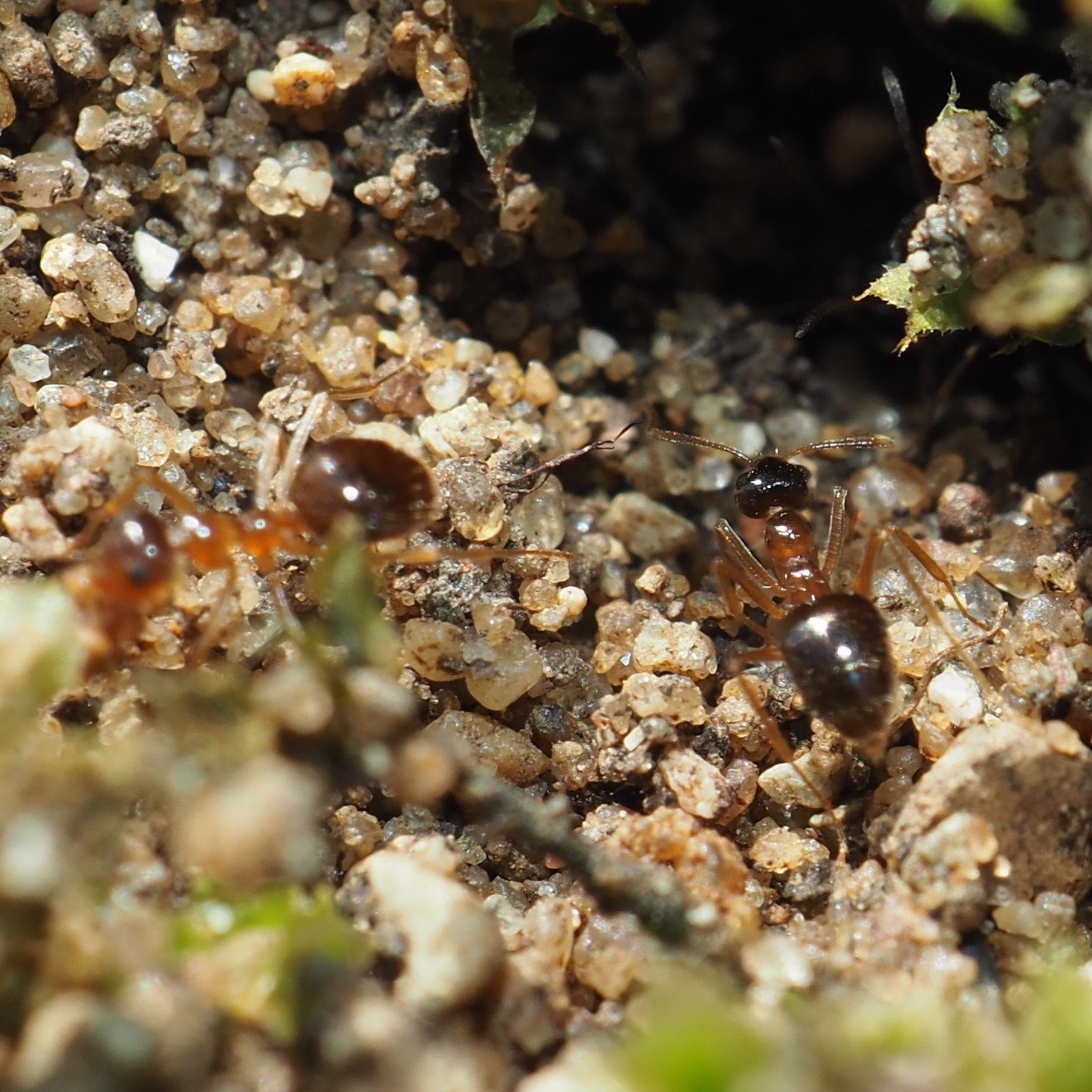
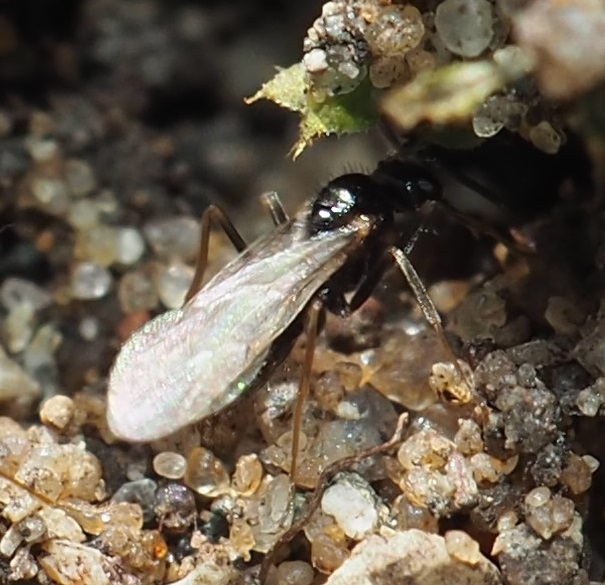
After the show last week in which the winged queens came out, were chased about by the males, and finally flew off, hopefully to found their own new dynasties, I thought, that's it, all over till next spring. But this week the scene replayed itself. First, the winged males showed up again on Sunday. They spent a lot of energy trying to move a piece of debris that seemed to have blown over (remember that wind we had?), almost covering the entrance to the nest. On Monday, about 1:30 pm, I checked out the scene again, pulled the folding chair over to the sidewalk, and aimed the camera at the hole, and not long after something big and orange was moving from inside the hole and coming out! It was ANOTHER big orange winged queen! (Not long after the first queen came out, another struggled out too.) Several workers and at least one male seem to be accompanying Queen 1 out and away. She must have already been impregnated because she flew away immediately and I lost sight of her....
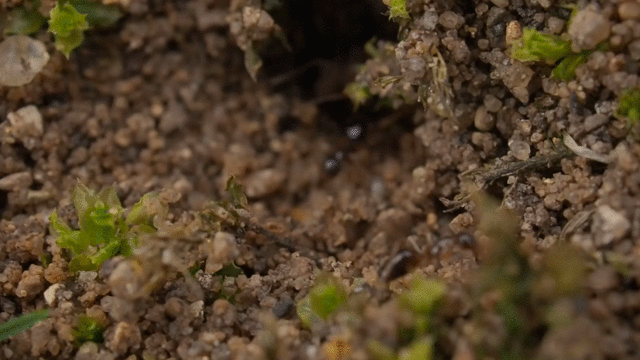
There were at least two new ants out there. This first one (Pictures 1 and 2) I tried to ID, but it looked so different from any of the ones I'd ever seen. It turned out to be an Acrobat Ant, of the genus Crematogaster. @peterslingsby got it down to genus, and Steven (@stevenw12339) further to a choice of C. cerasi or C. lineolata. Apparently one has to get down to certain hairs on the shoulders of these ants to tell the difference. So that's it for this week for those Acrobats. The other new one was racing along a vine in the northern weed patch, too fast for a good shot, but it was about the size of a Small Honey Ant and was black with red legs. Oh no, I forgot, there WAS this one other ant out on the porch bricks (Picture 4). I've no clue as to what it is, will have to go through my set of ant pictures. :-)
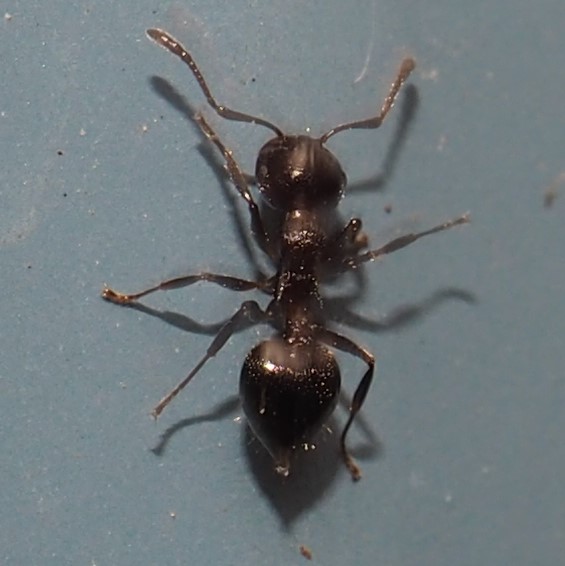
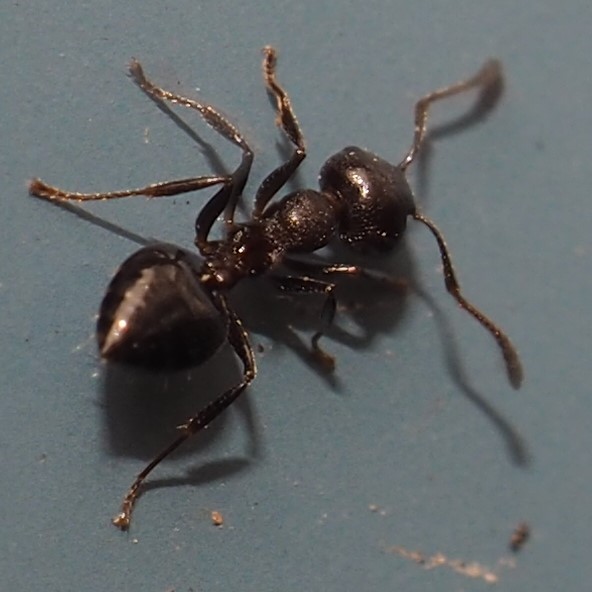
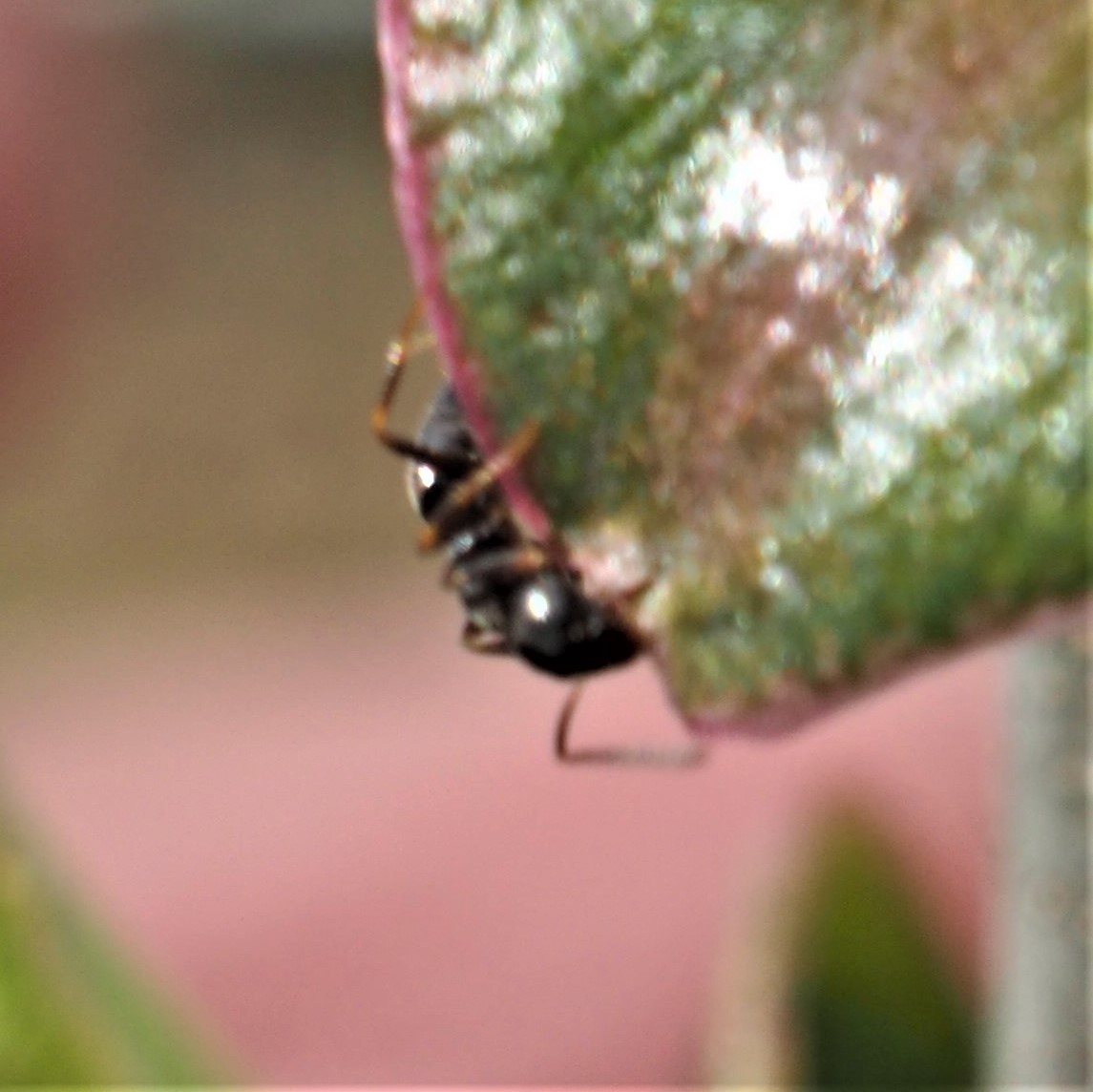
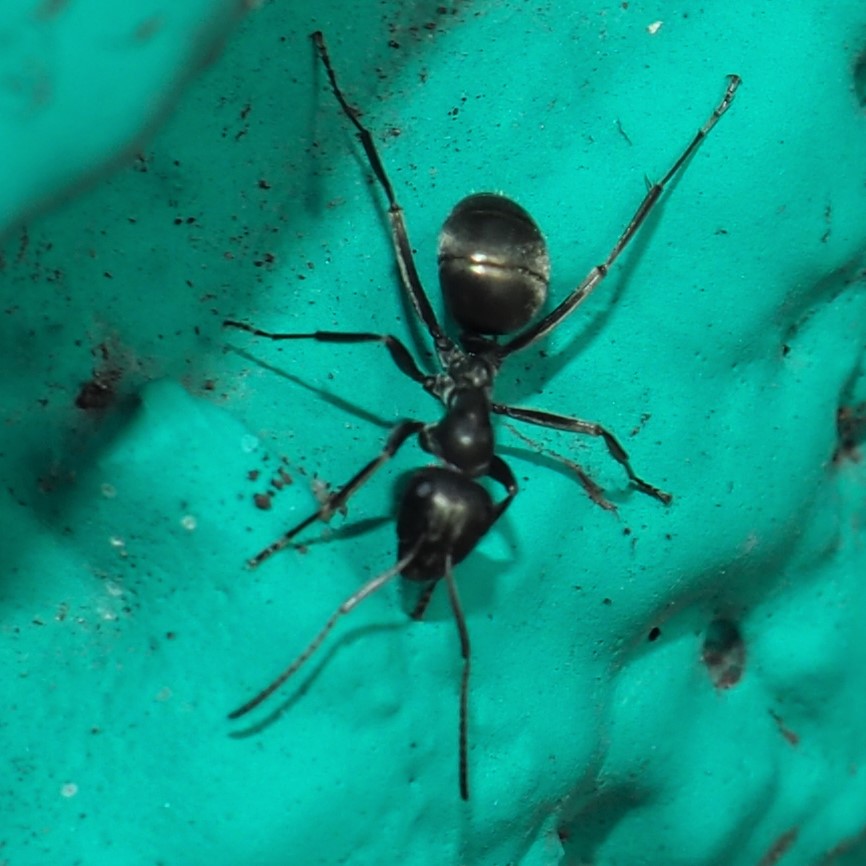
Bees, yes. There were a number of these little Osmias, like the one that was keeping time with its tail a few weeks ago. But the most beautiful (to me) was this Bumble Bee who was really into the Golden Wood Poppies.
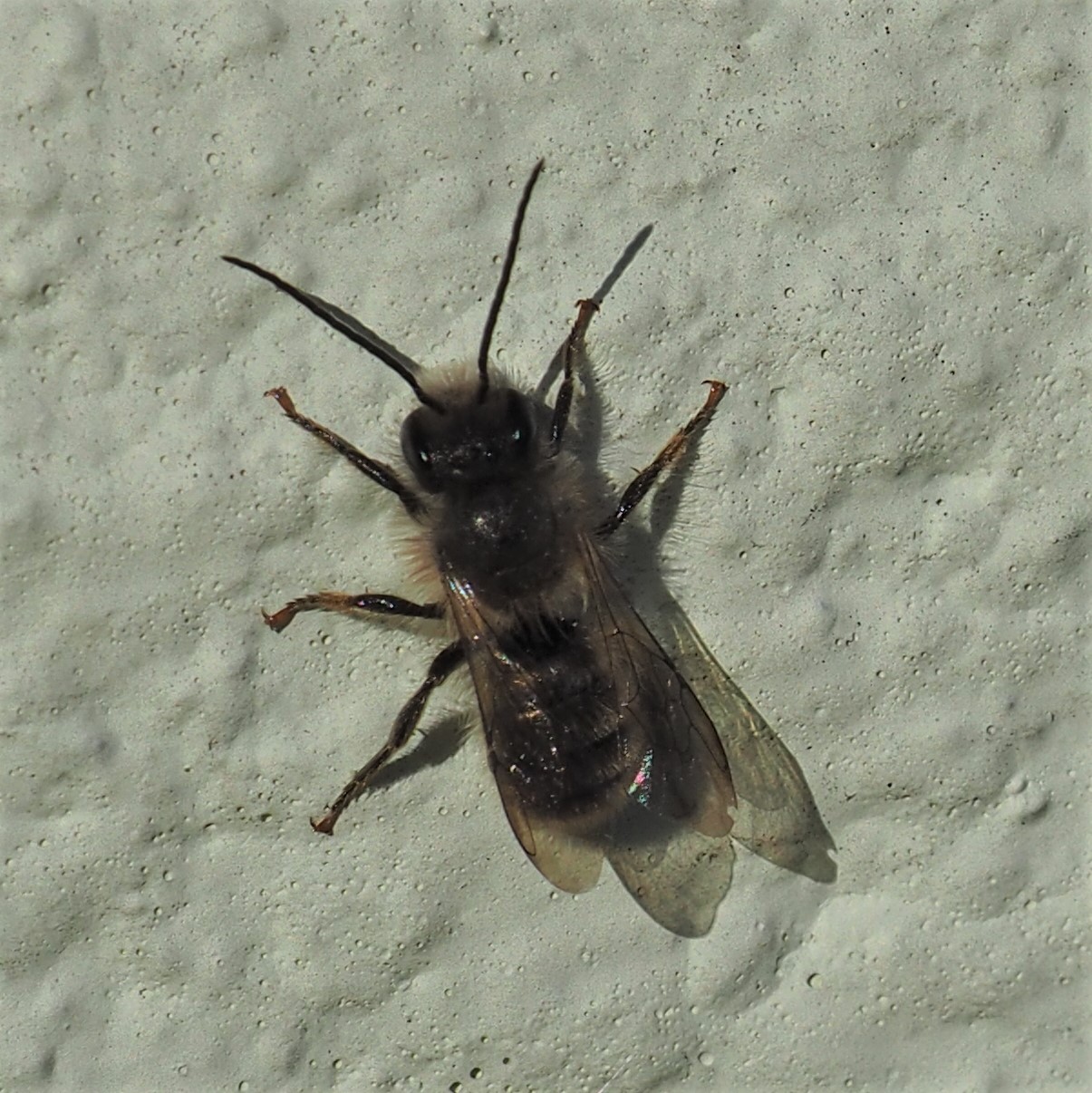
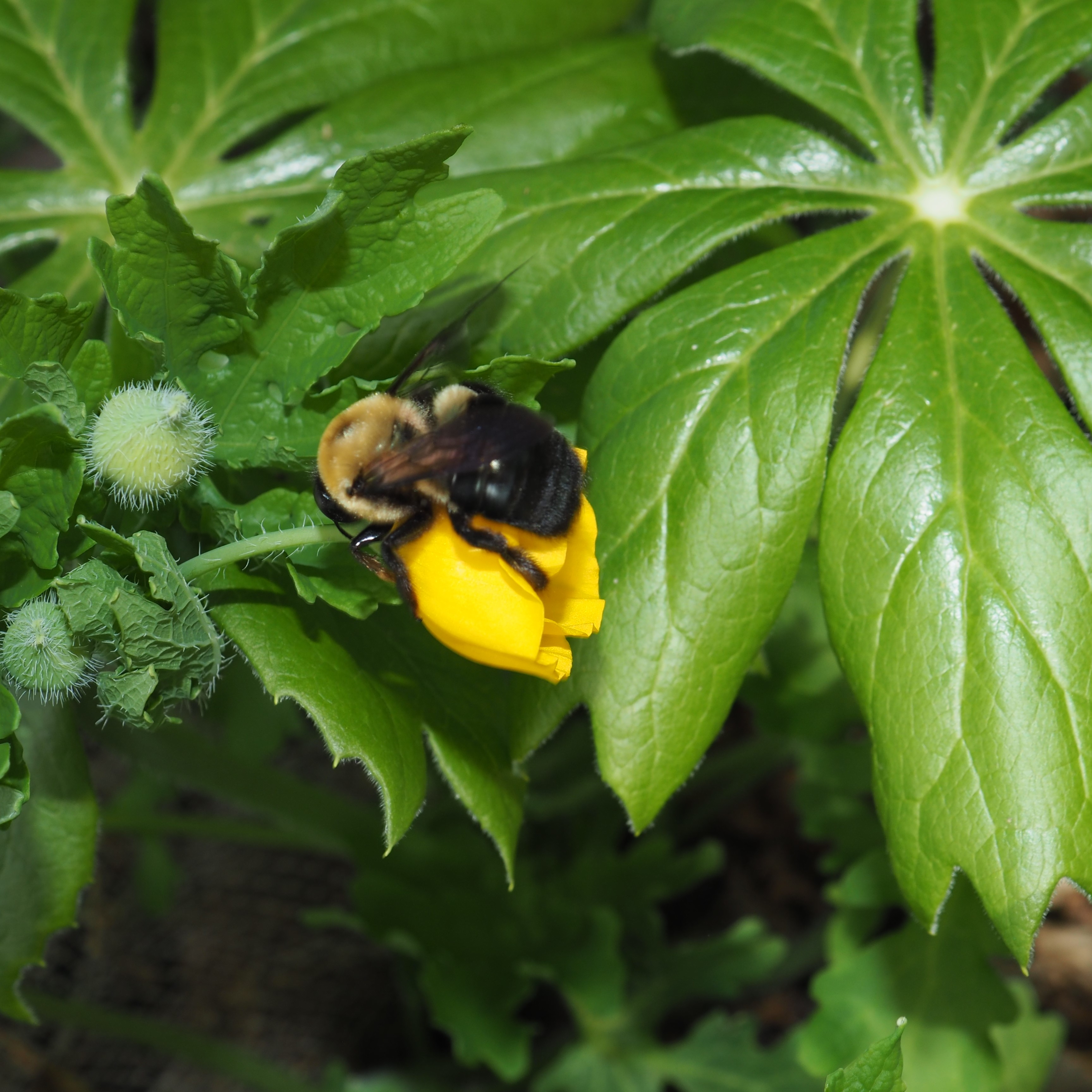
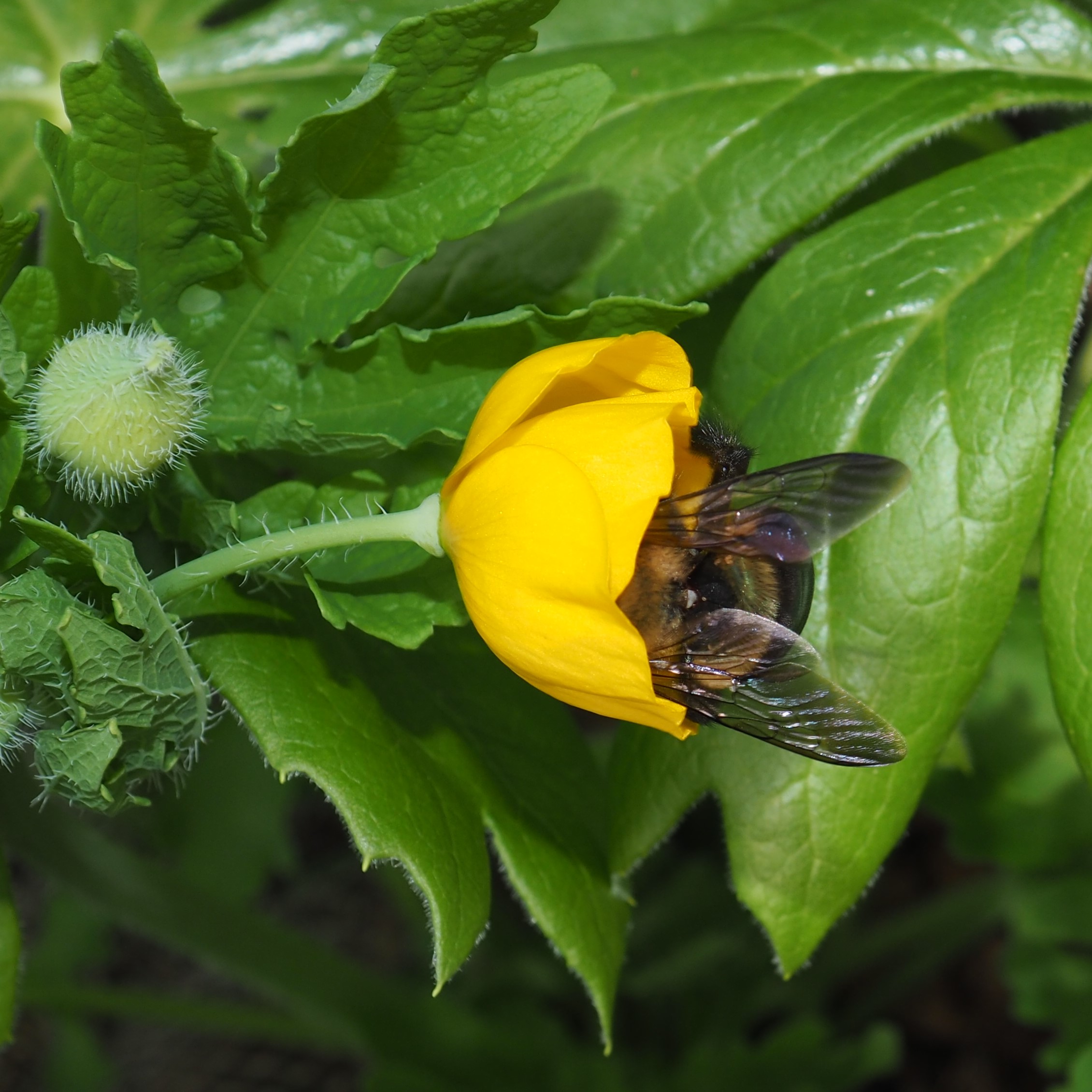
This little beetle is shaped like a Lady Beetle, but in different colors. The second one seems to be that Marsh Beetle from a couple of weeks ago. The third one is a Flea Beetle of genus Dibolia.
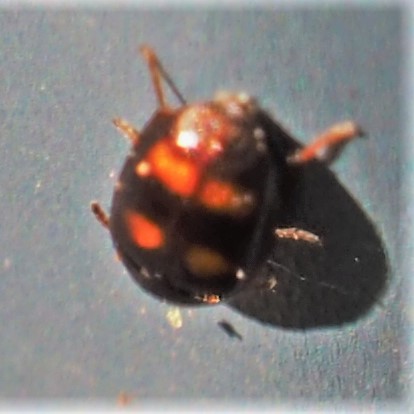
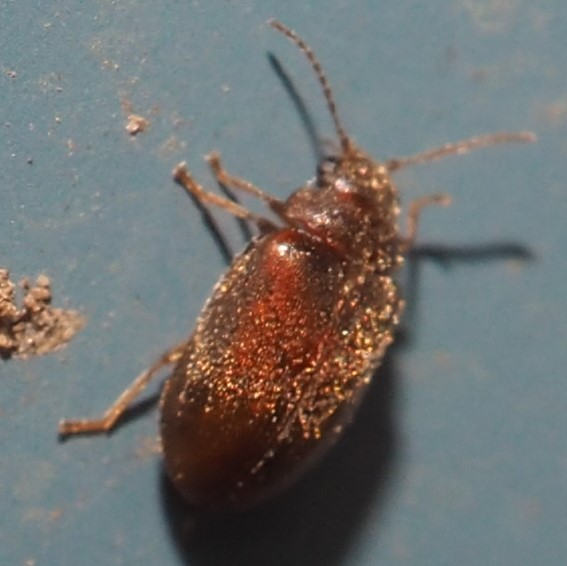
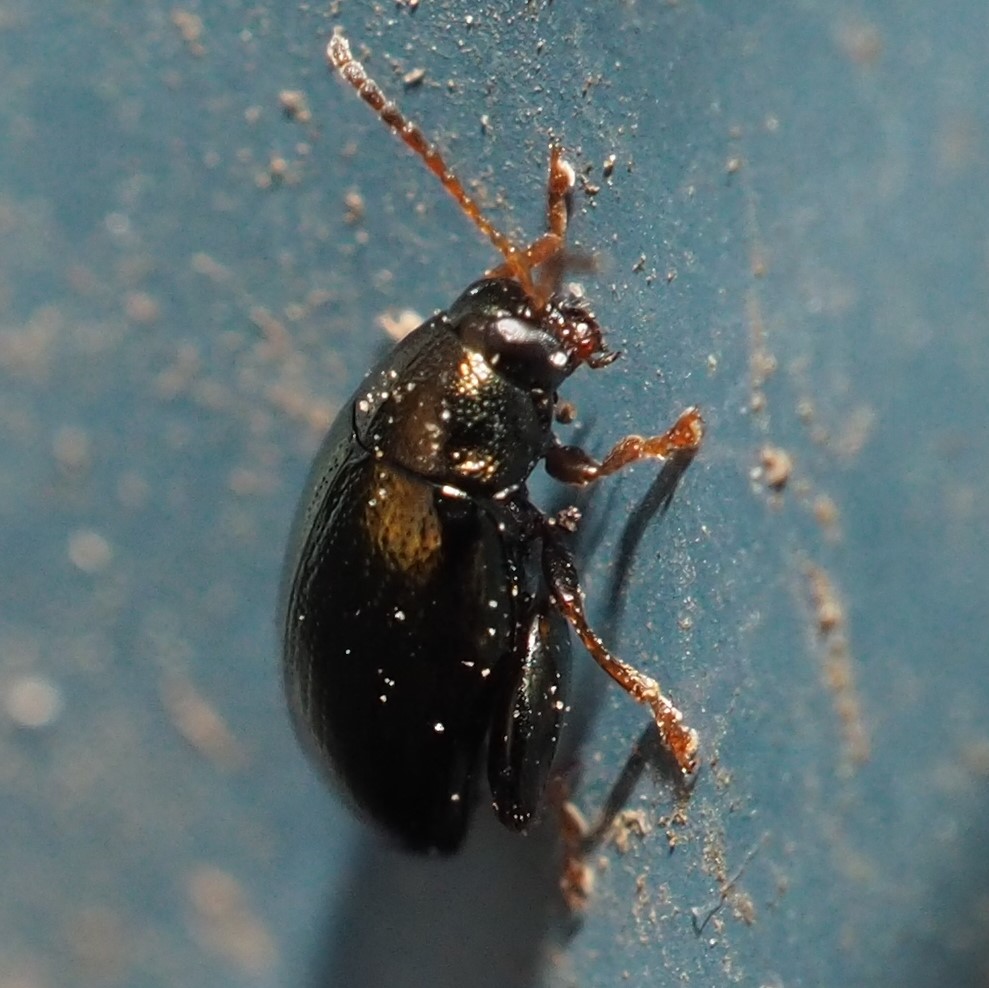
Here's a Rove Beetle. Is it the same as the one from a week or two ago? I don't think so - the colors of their two abdomens seem quite different to me. That one was ID'ed as genus Oxypoda (Picture 2) by @borisb. Still they look very similar in shape, so could still be closely related. He also ID'ed the next one as a Sap-feeding Beetle of genus Omosita. In fact, all the beetles this week were identified by @borisb (Boris Büche). Fourth is a Shining Flower Beetle, but if you ask me, I'd say it looks like a yummy piece of candy.
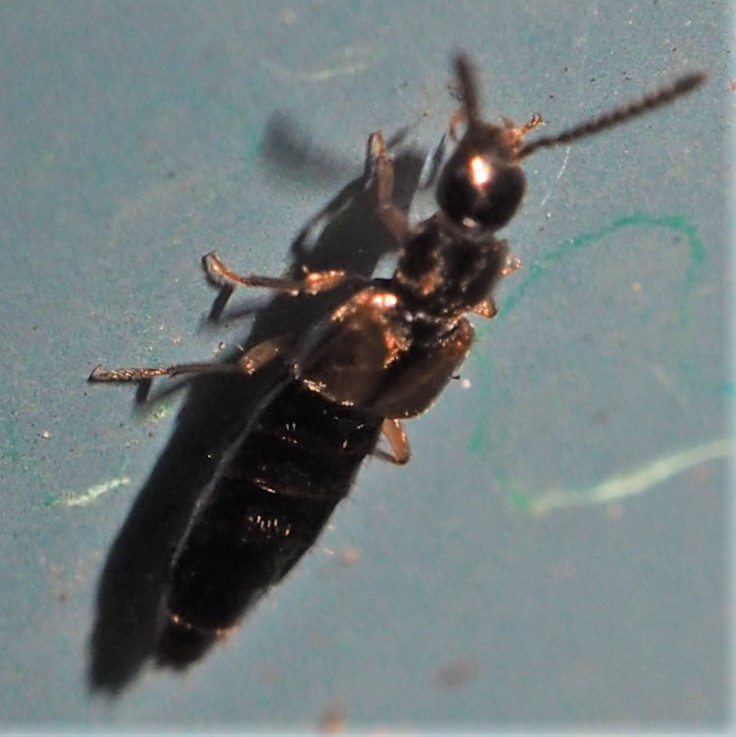
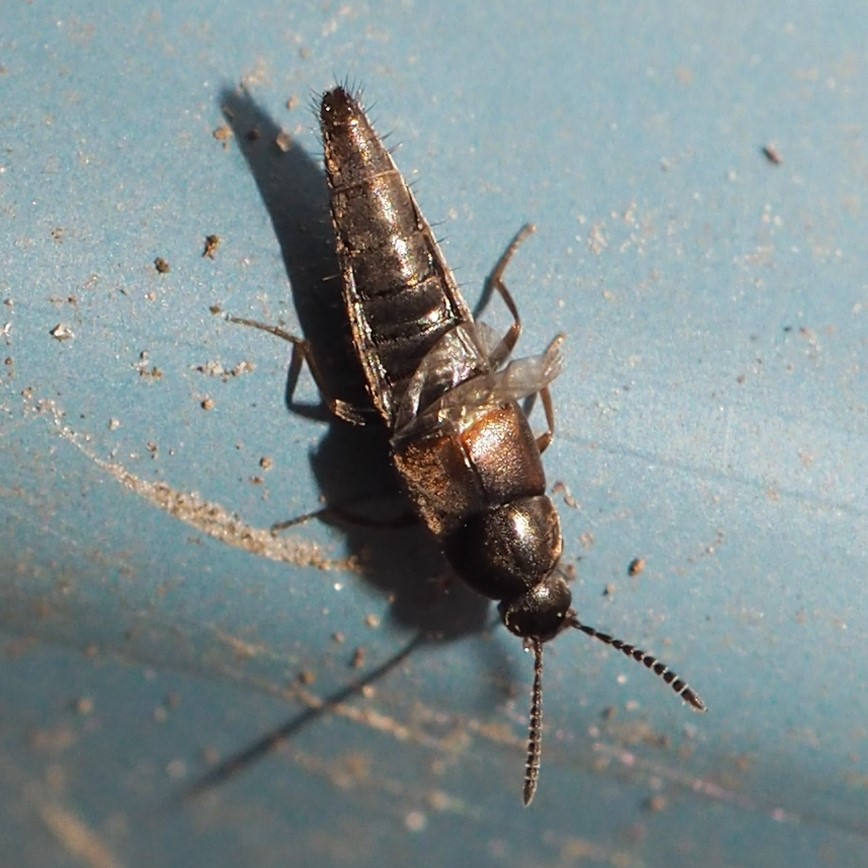
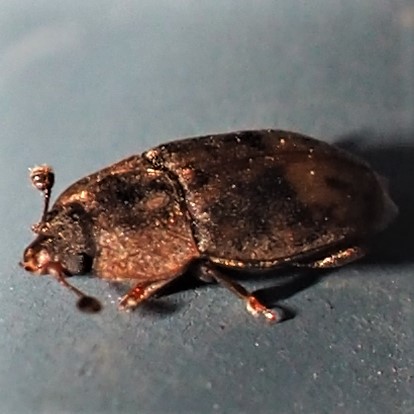

This first tiny beetle is a member of Deathwatch, Spider, and Wood-borer Beetles (Tribe Dorcatomini). The black Weevil is of the genus Anthonomus. We've seen this genus before, but I took lots of pictures this time to try to get one nice enough to identify it by. The third, also a weevil, is our old friend the Redbud Bruchid. (Remember a bruchid is a weevil that eats the seeds of a leguminous plant like beans, peas and - Redbuds - yes,they have those pods too!)
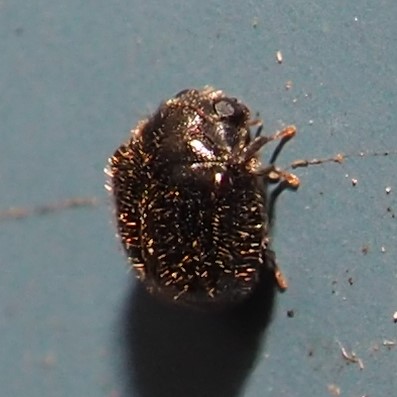
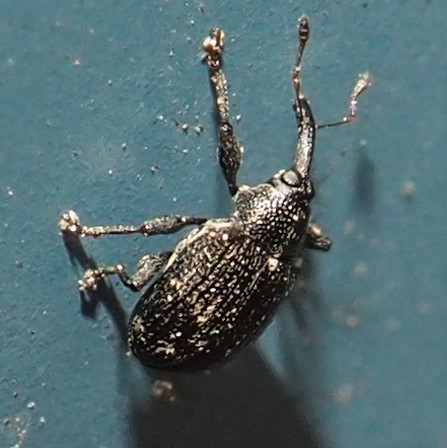
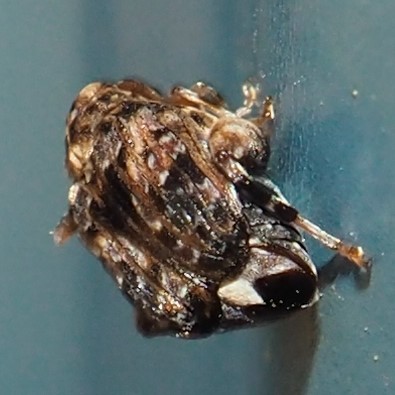
Let's look at the bugs we saw this week. We got TWO kinds of Assassin Bugs: the greenish one (Zelus luridus) and the brownish one (the Four-spurred Assassin Bug, Zelus tetracanthus). They appeared within two days of each other. The green one was covered in bits of sand (it must have just dug its way up from under the shop). This Four-humped Stink Bug, Brochymena quadripustulata, was about an inch long (BIG in our world). Did you see that, Latin buffs? - its species name "quadripustulata" should mean "four pimples (pustules)" Huh? I only see two.
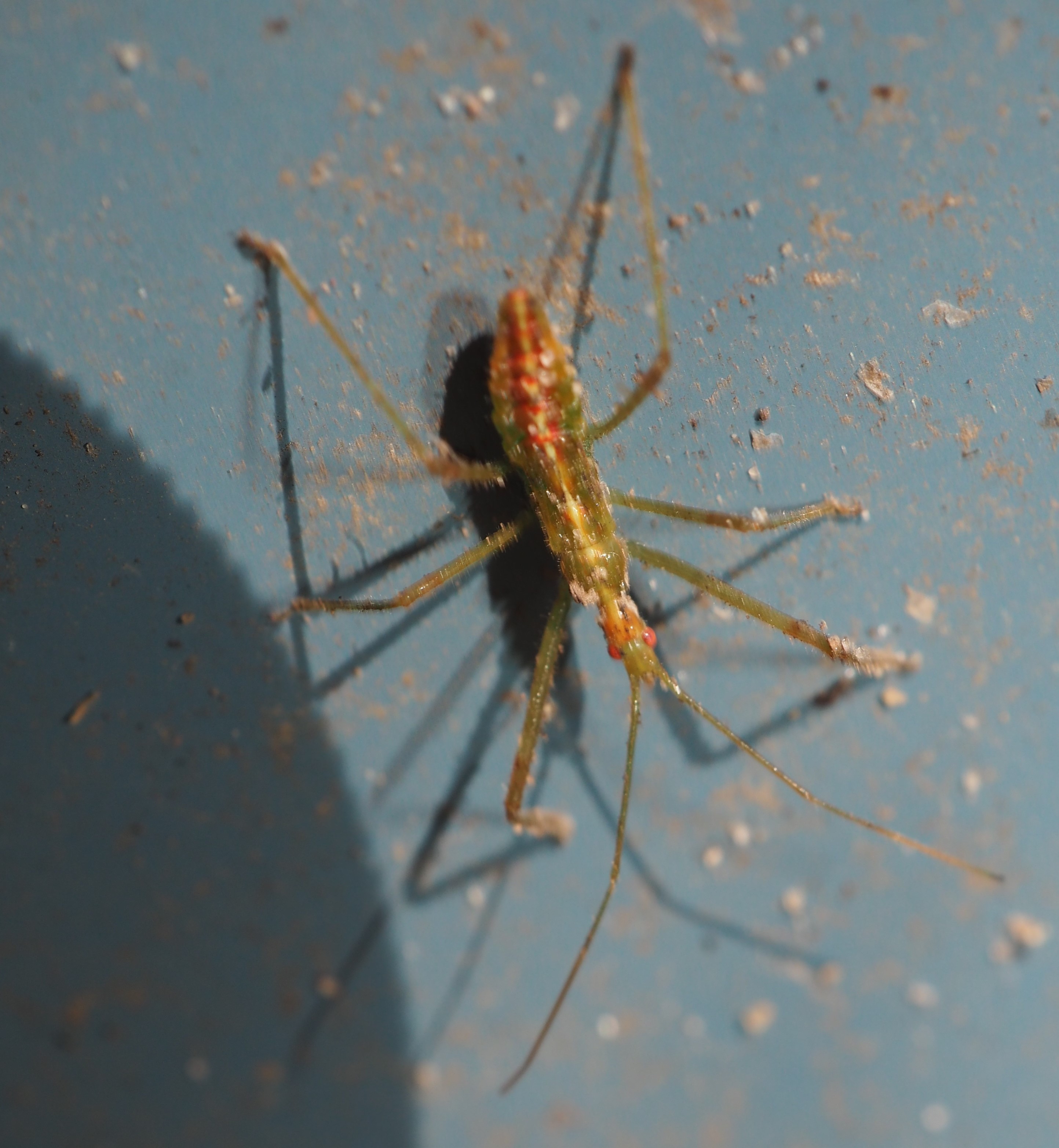
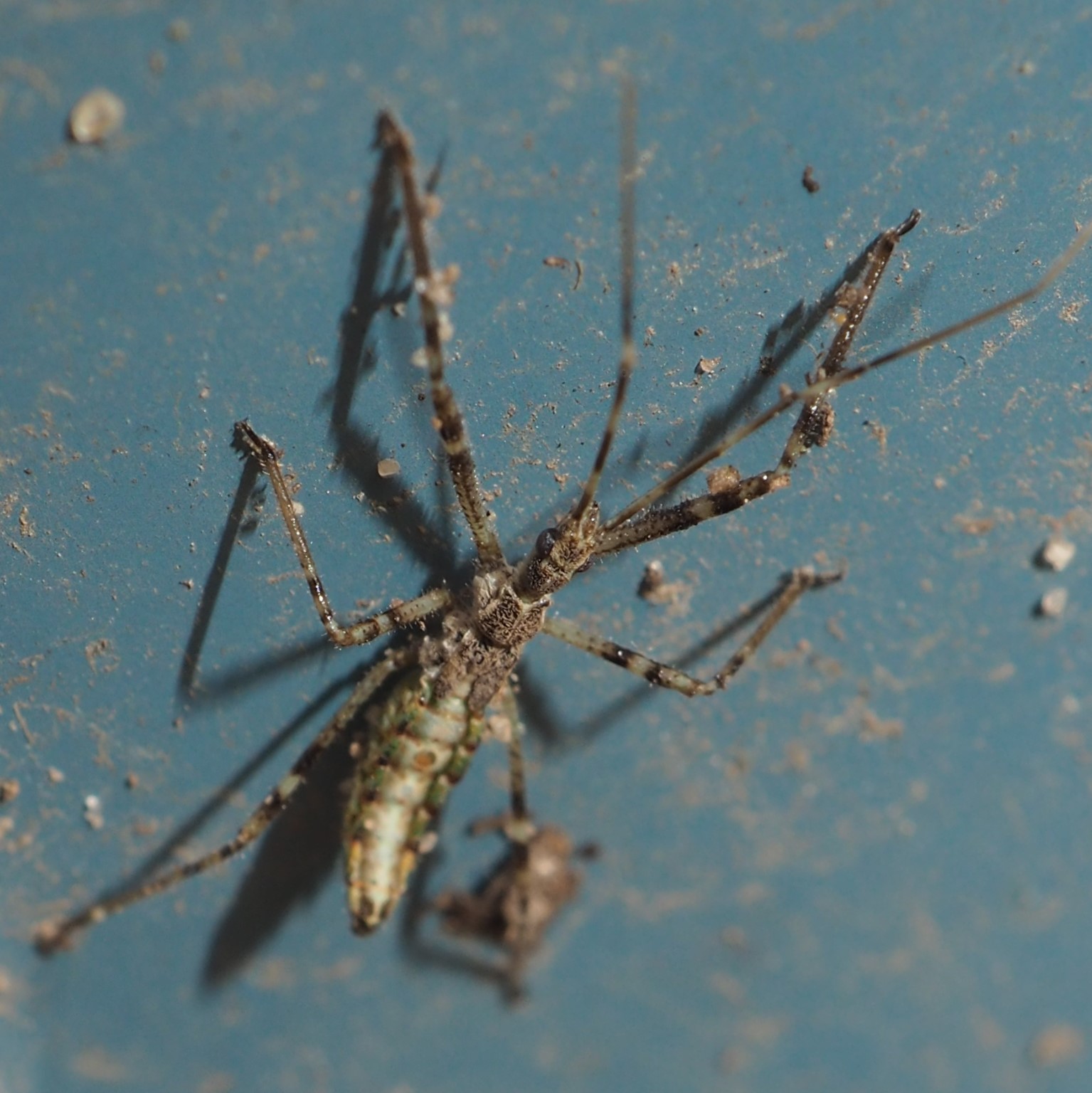

Our favorites: the leafhoppers. The same two as last week, I think. One of genus Eratoneura, and one of Erythridula. Last of the "B's": the Red Admiral Butterfly. Those guys have been amazing this spring. One afternoon, there were 3 or 4 of them flitting up and landing again in the clearer spots of ground. They seemed to have little or no fear of me. As beautiful as they are spirited, they are great favorites of mine.
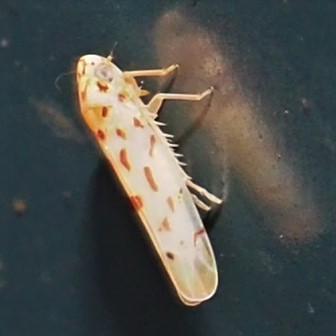
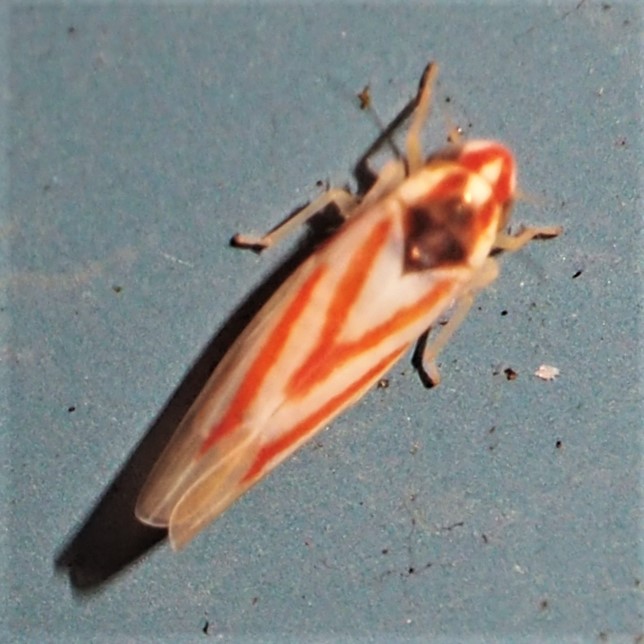
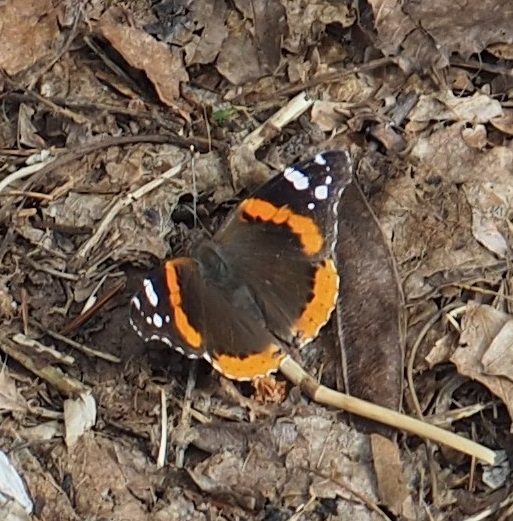
I need some flowers before we plunge into the flies.
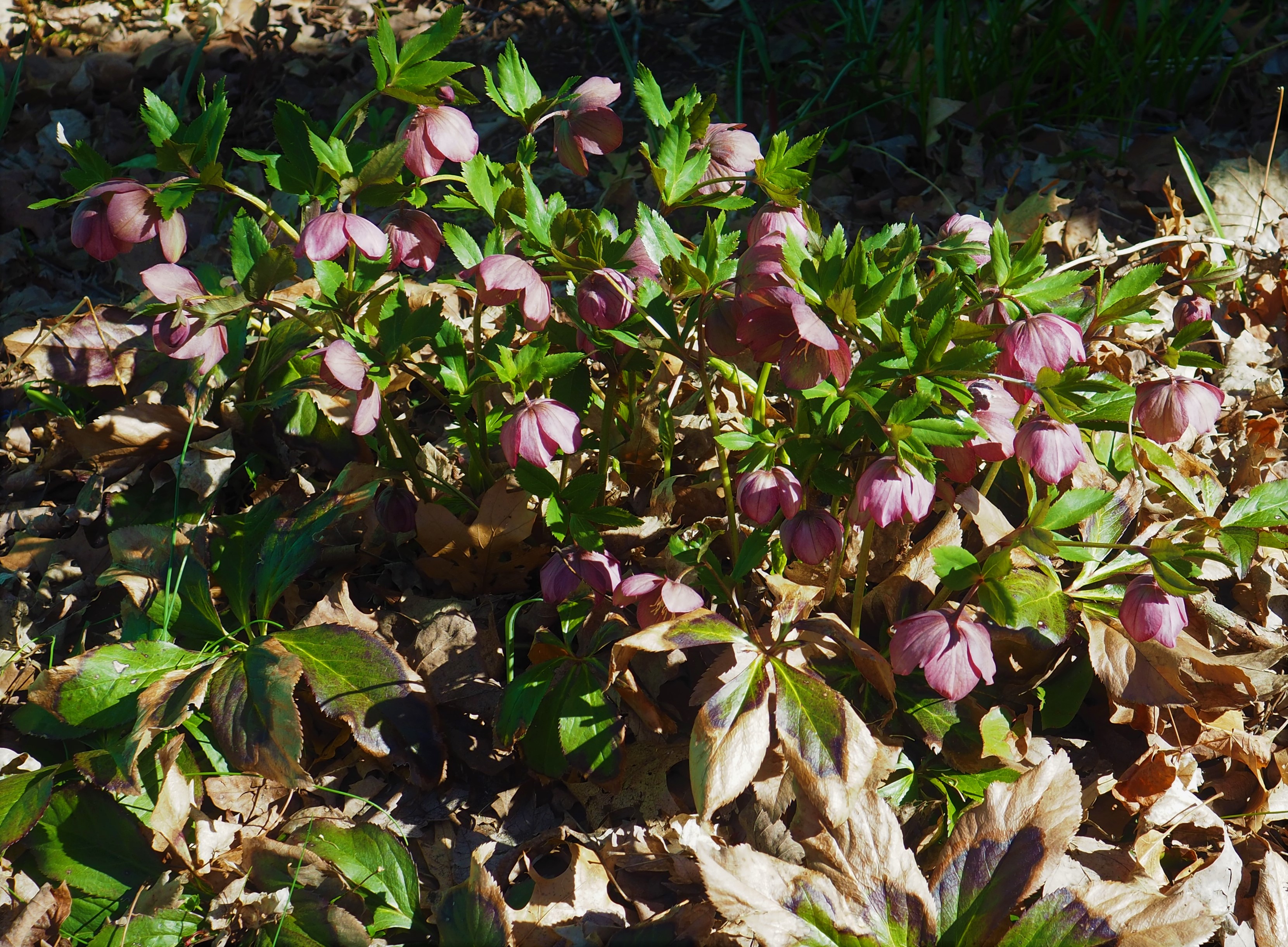
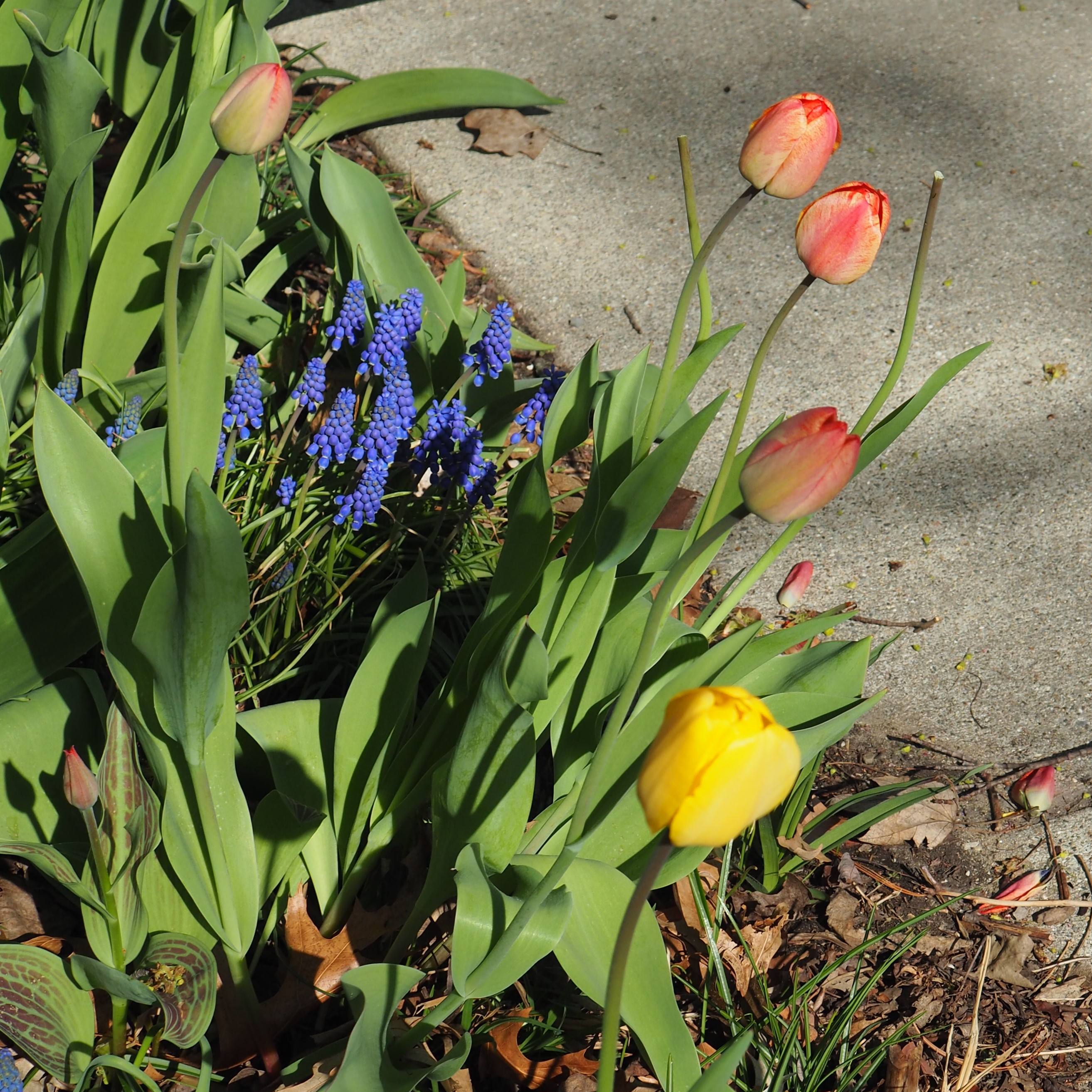
The grape hyacinths that bloomed first are waning, but these later ones (the ones whose leaves have been lying on the ground all winter) are just getting revved up. They extend the season for those wonderful blue spikes. The next two are the full-sized hyacinths.
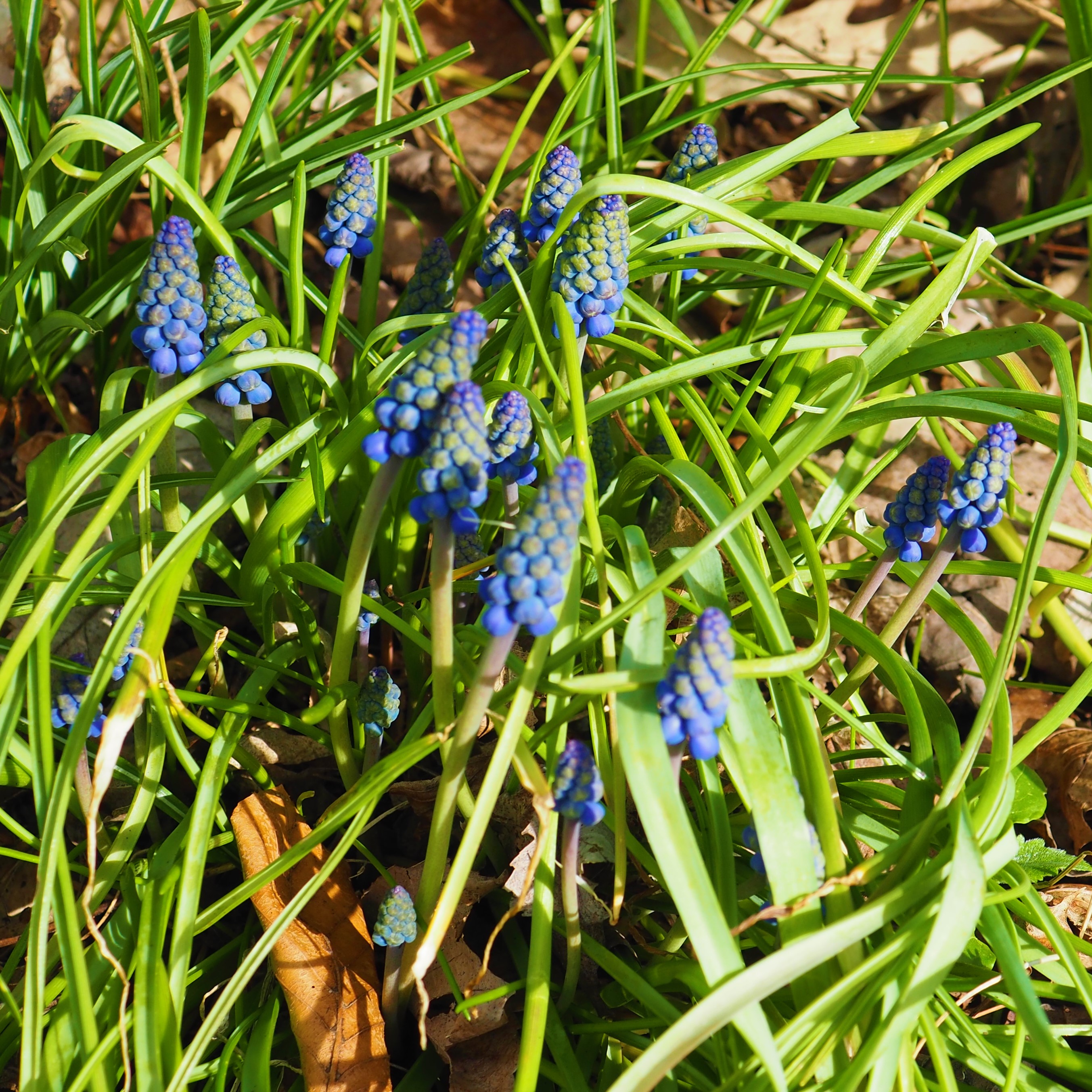
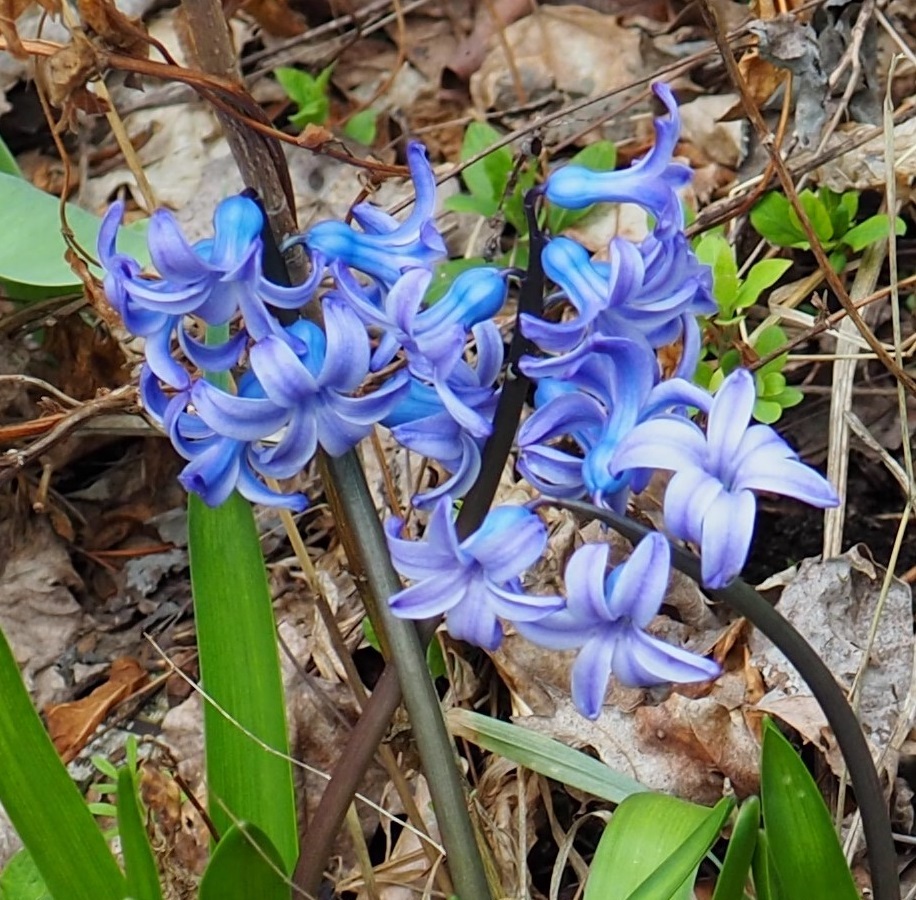
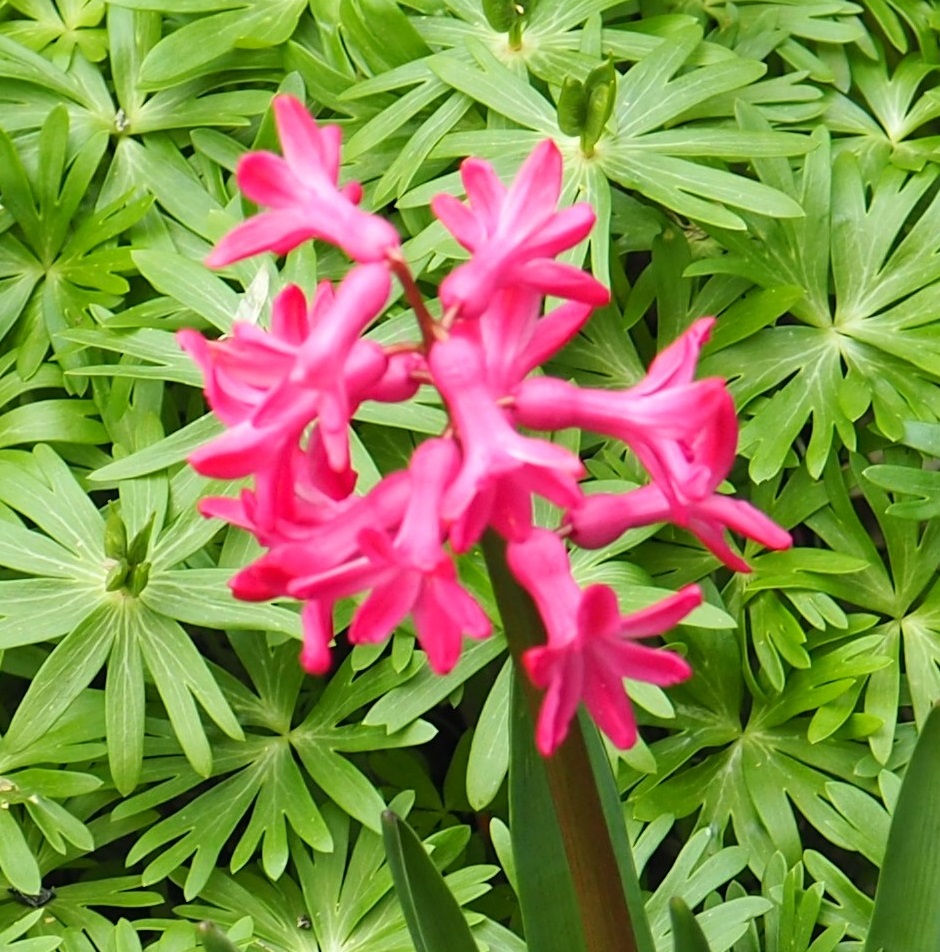
Periwinkle (Myrtle) is one of the most invasive plants in my yard. But for a very short time in the spring the flowers are quite beautiful. So I haven't had the heart to get rid of it. The primroses are beginning to bloom now. They will only get prettier for a few weeks. They are about my favorite spring flower.
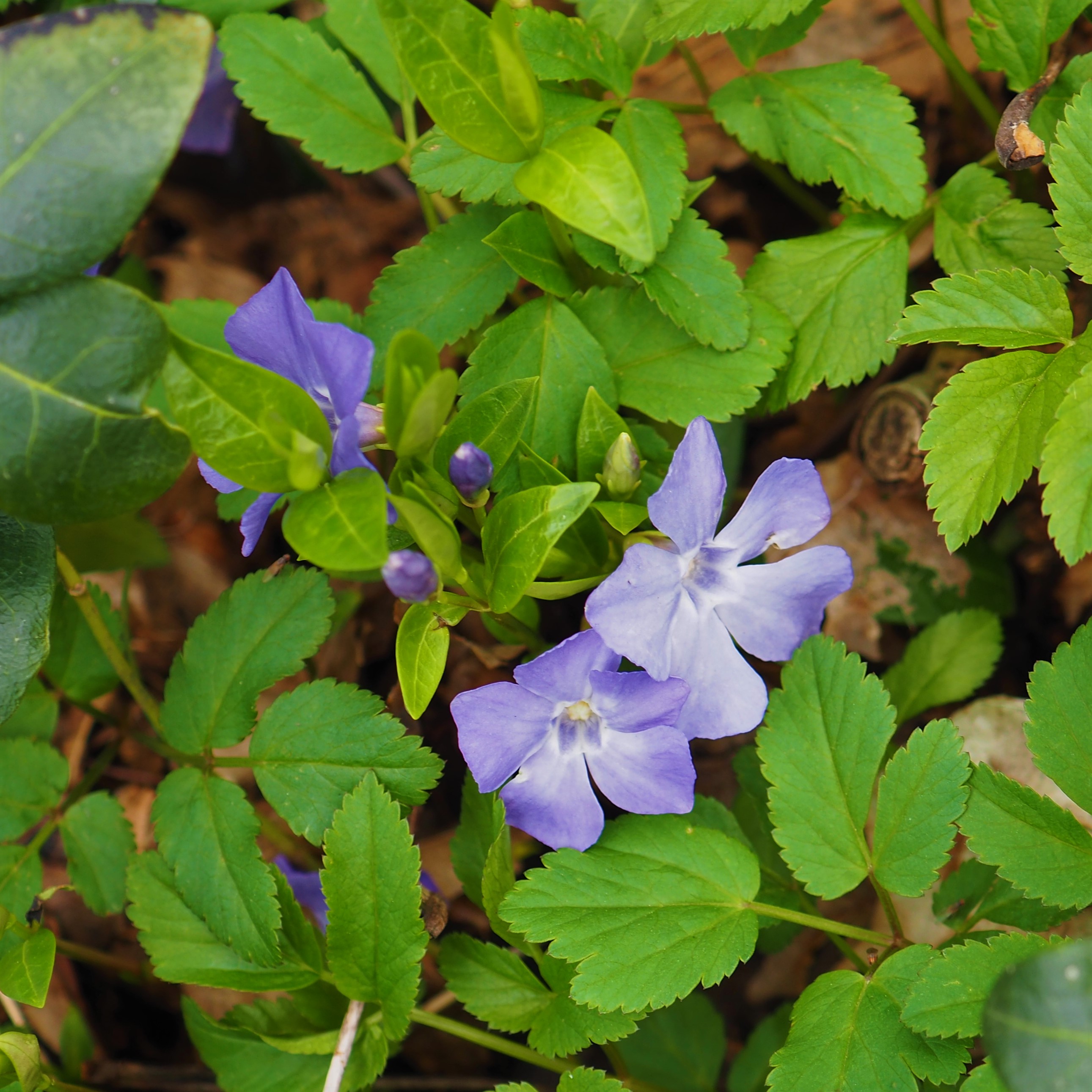
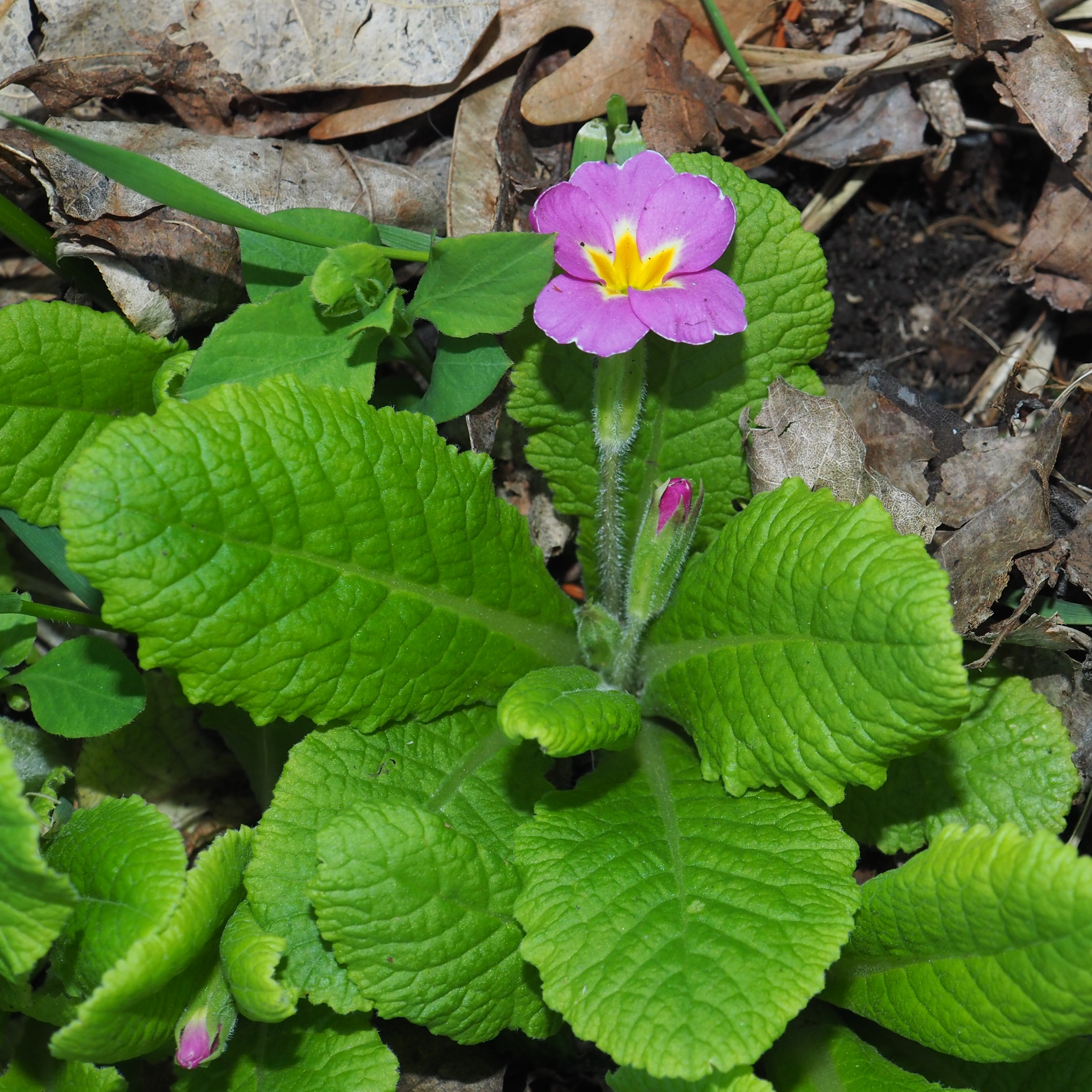
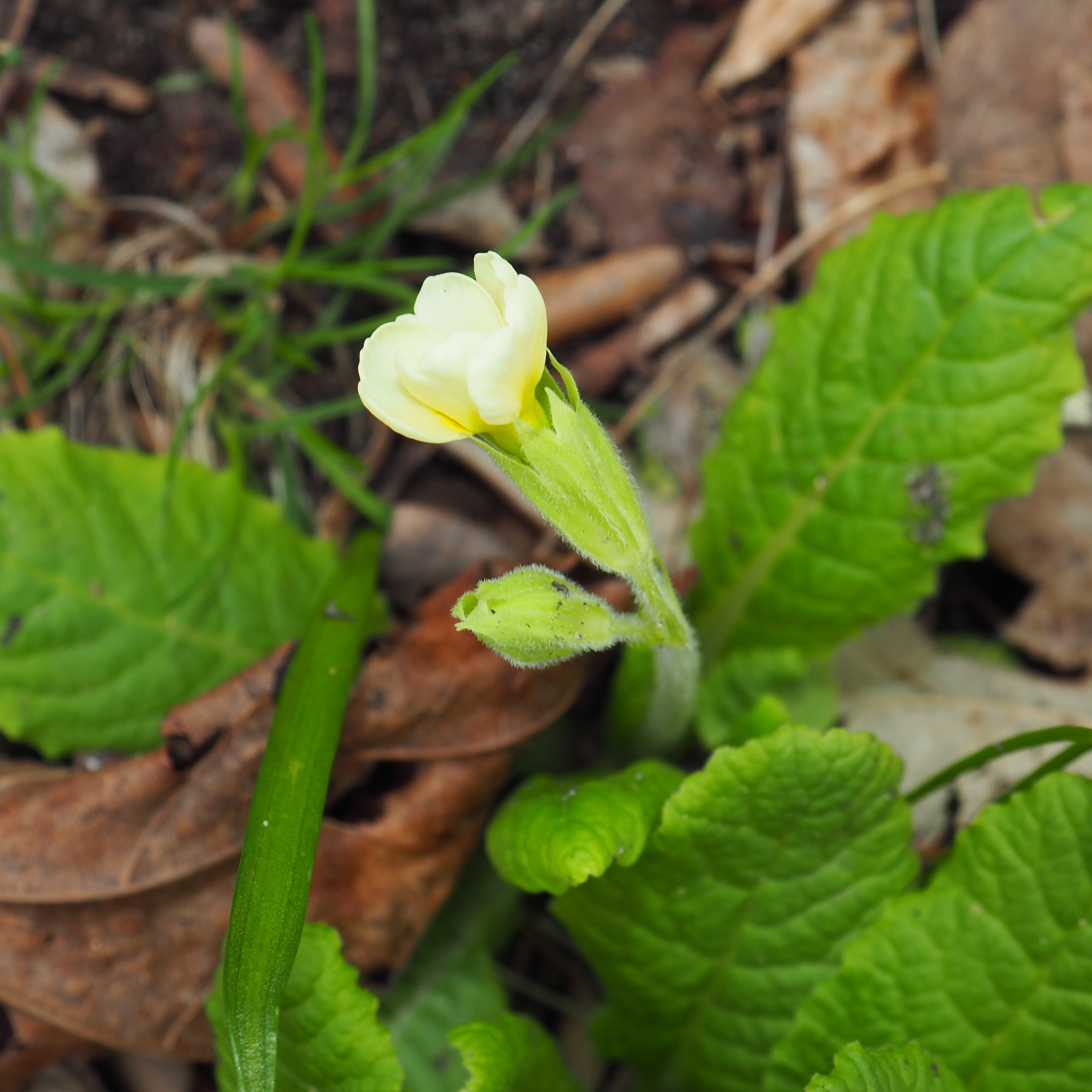
The flies are still predominantly various species of midges, gall midges, and fungus gnats. But there are still some more exotic flies that appear. One of my favorites are the hover flies. This week a Helophilus fasciatus showed up by the pond. This one is a male, but eventually a female will come and we will see her dipping her tail into the water, laying her eggs. The larvae will live under the water till they are ready to pupate and become adults themselves. They live on dead plant tissue so are part of nature's sanitation crew! The second one is a pretty little fly (don't know its name yet), only about 2 mm long. Third is a different tiny fly.
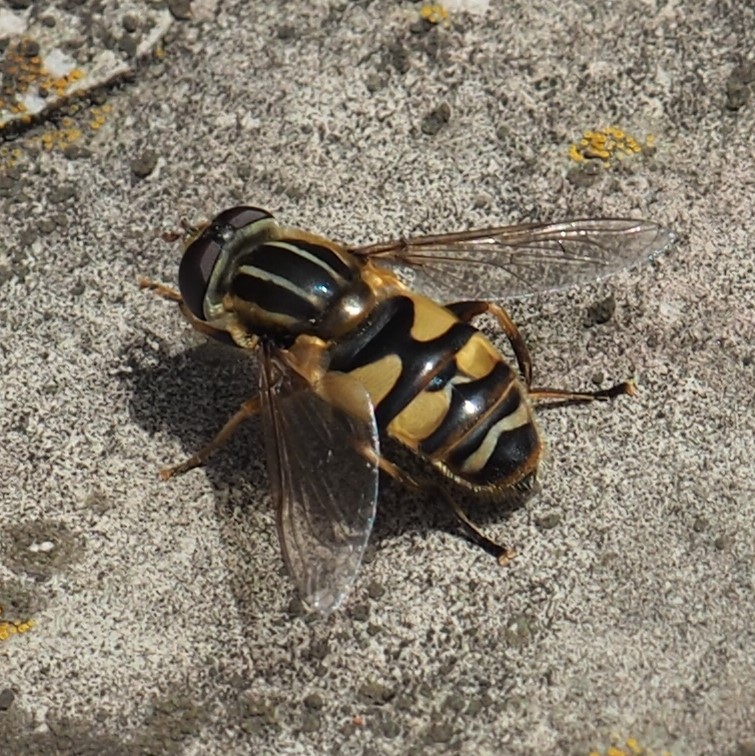

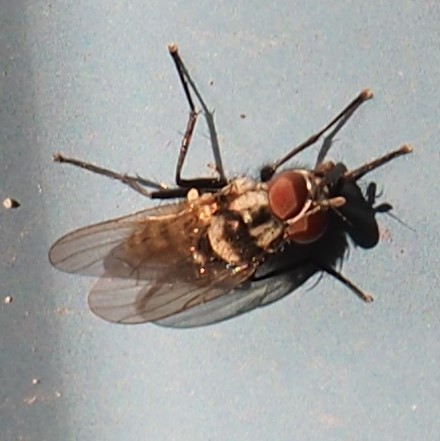
Here's our first Moth Fly, a fly that mimics a moth. Second is a midge with a huge red parasitic mite. It was acting as if it was in a lot of pain, whether or not they "feel pain". It was dead the next day. Sorry. I'll just show you one gall midge this week. Its iridescent wings are really pretty.
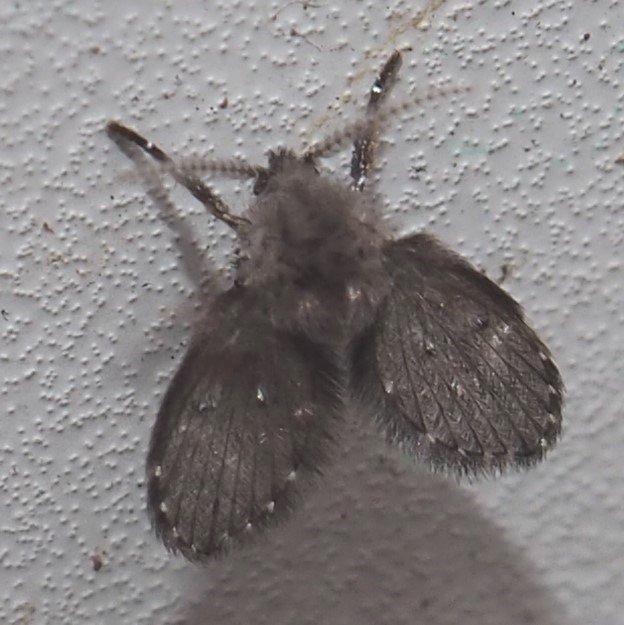
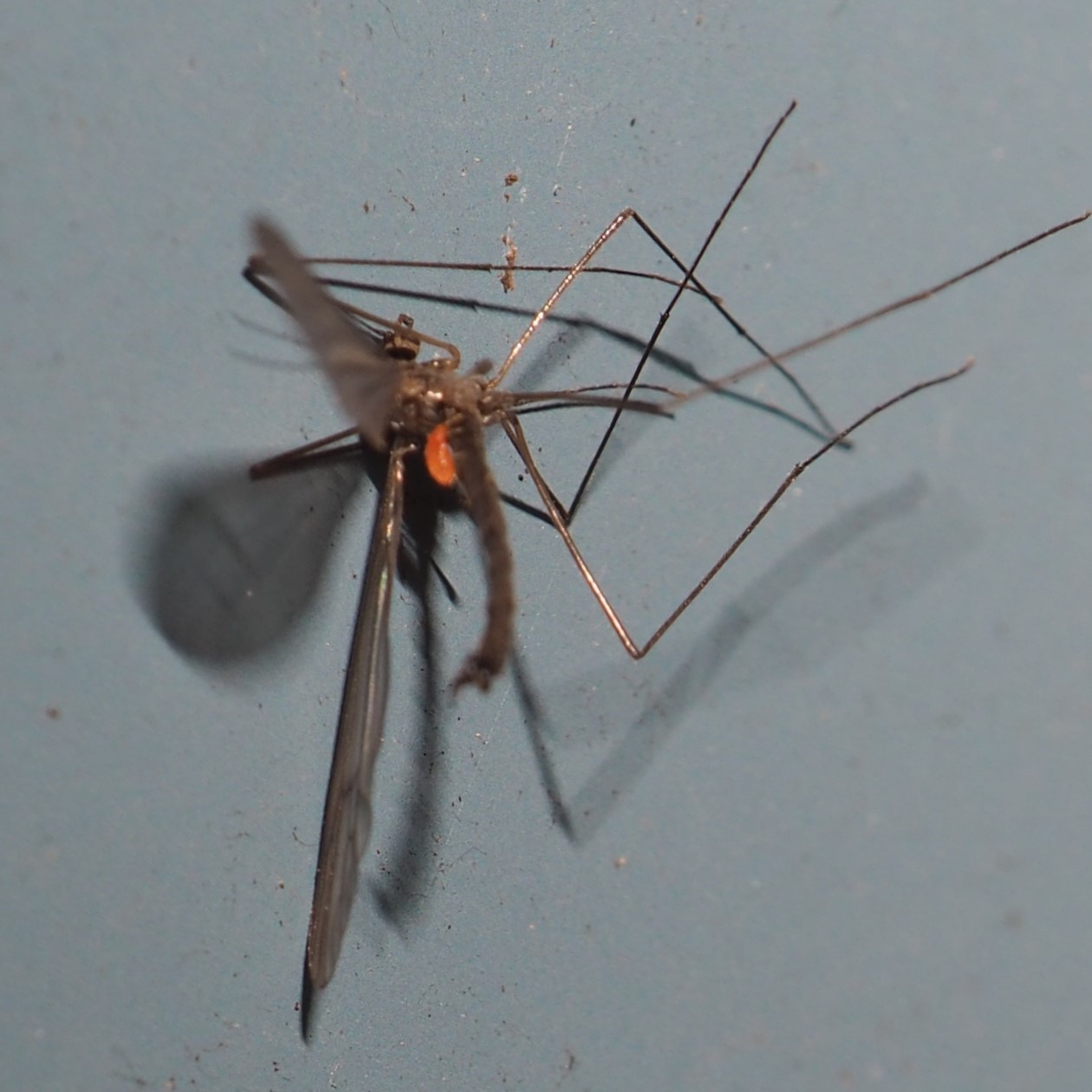
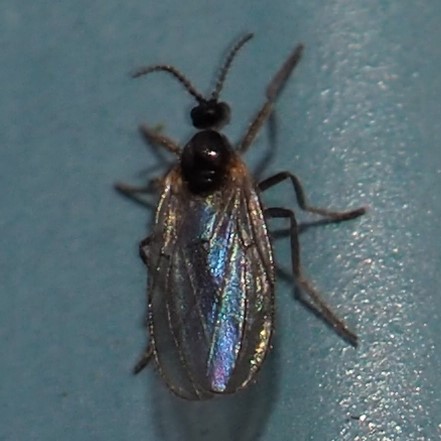
Just a few more outliers before we get to the spiders. You'll be happy to see that the Mother Robin is still on her nest. It's right where I open the front door to get inside, but she just sits tight. I try not to disturb her, just keep hoping that nothing disturbs her this year. This second creature - I had no idea what it is, but @tigerbb (Rebecca Ray) identified it as a Bristle Millipede in the genus Polyxenus. It is weirdly beautiful, isn't it? The last picture here is one that probably everyone has seen, whether or not they know what it is and what is causing it. The darker dots form the shadow of a Water Strider, which appears in the upper right of the picture. Its feet can stand right on top of the water, due to surface tension in the water where the feet touch the water. The shadows are on the bottom of the pond. So many times you will see the shadow pattern before you even see the insect causing it. Once in a while you will see two Water Striders jump toward each other. If they are two males they will hop apart very fast, but if they are male and female, then for a while you will see twice as many dots in the shadow. :-)


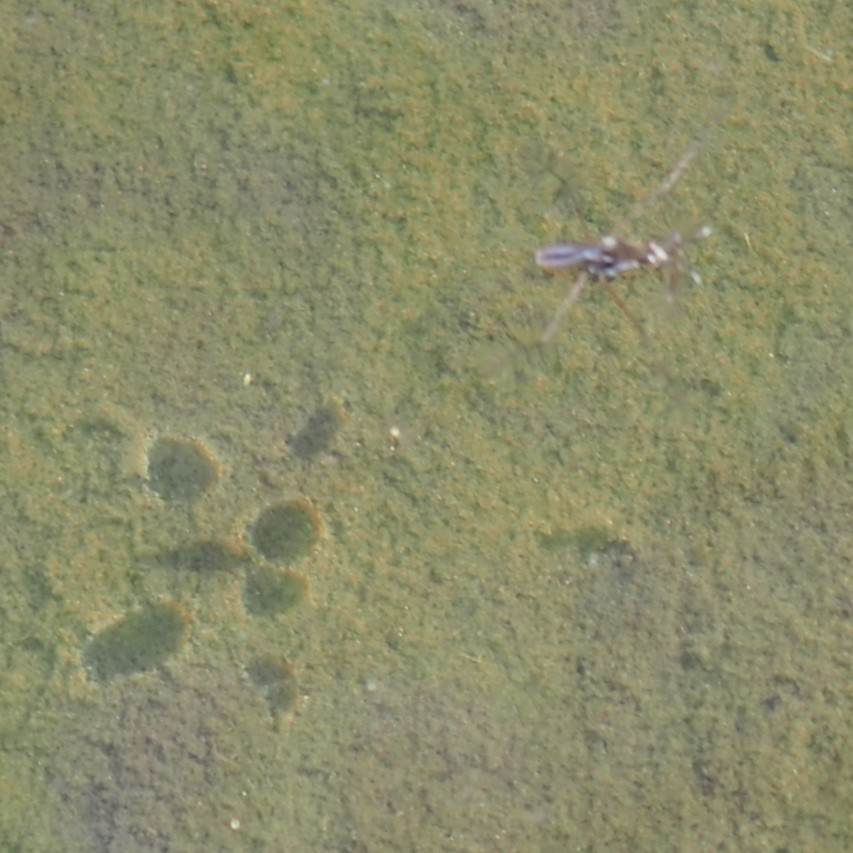
The big tough crab spiders were multifarious if not nefarious. This first one may be in the Bassaniana genus. It was large enough to make out as a Crab. The second, on the other hand, was so tiny it might as well have been a grain of sand, maybe .5 mm. The third one was so large its armspan might have been almost a cm. Isn't it a Ground Crab Spider? I can't yet tell them all apart.
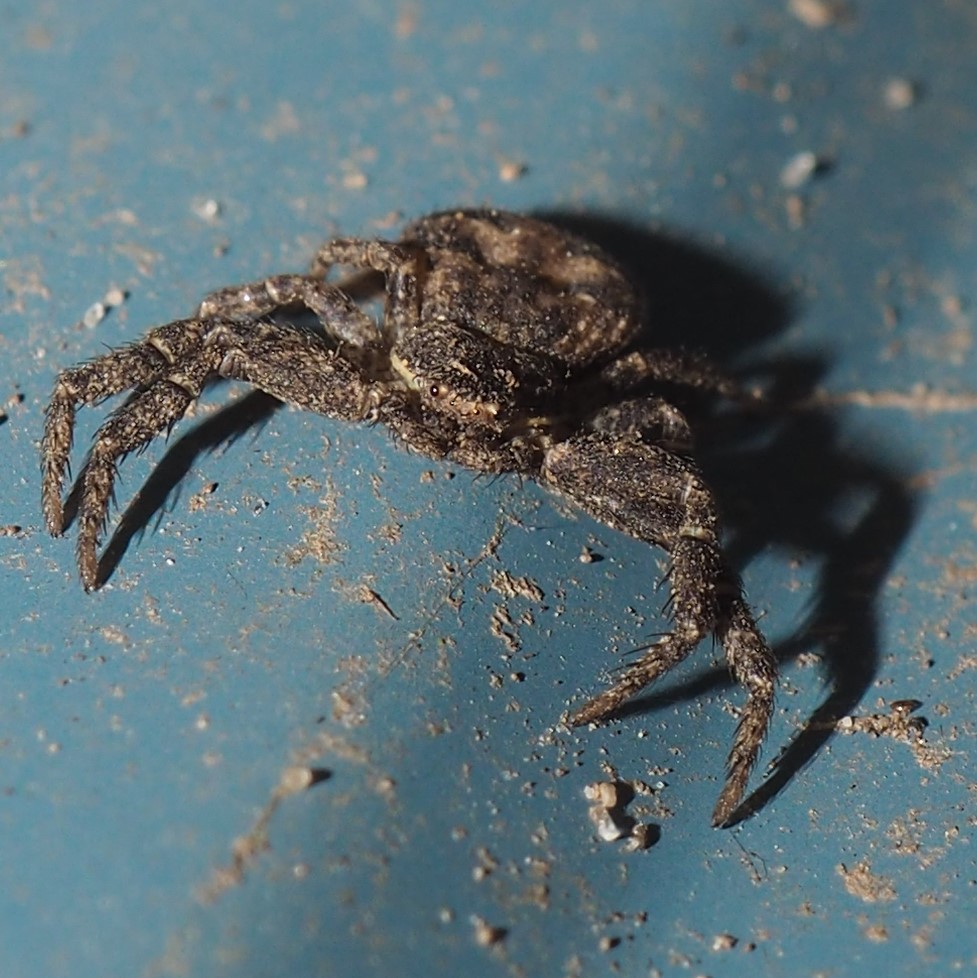
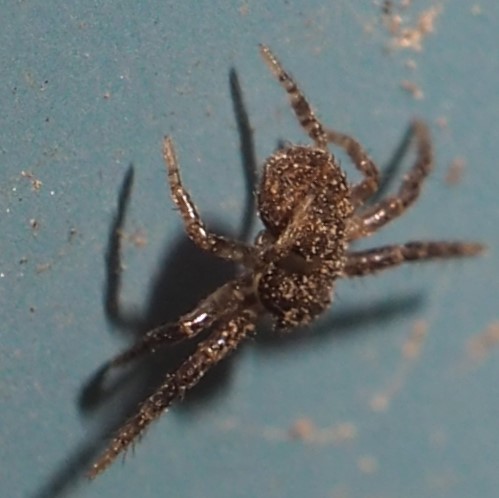

The tiny baby Common House Spiders have really grown. This one is 2 mm wide. But in the same week, we have had .5 mm ones. Picture 2 shows us an ant caught in the web of another Common House Spider. Third is another cobweb spider that we have been following from the time it was .5 mm. Picture 4 shows it from another angle and a bit more development.

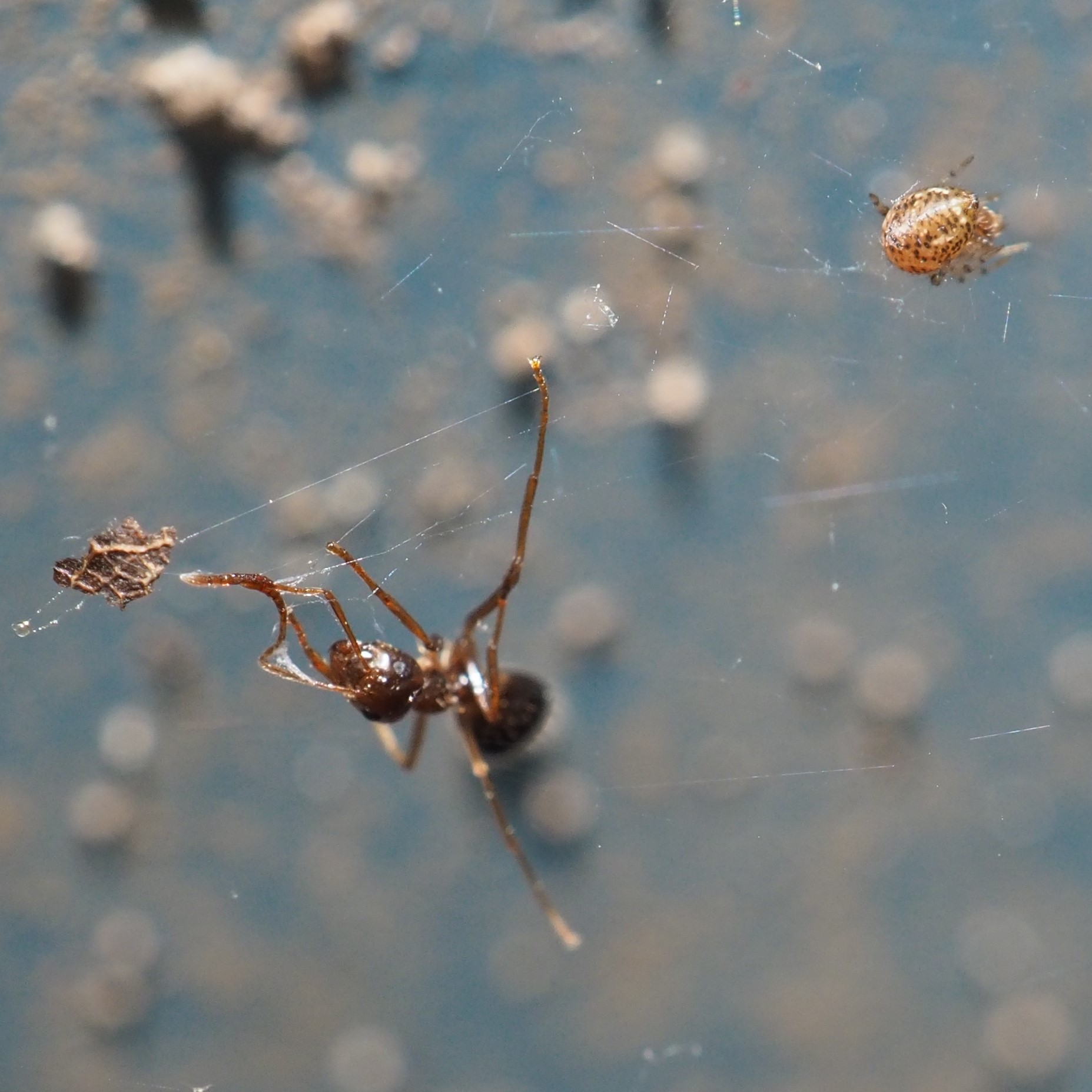
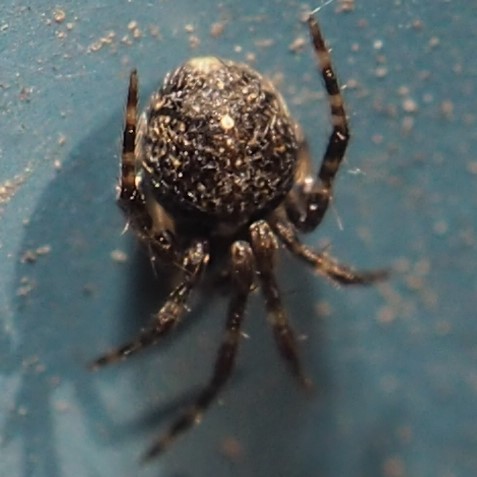
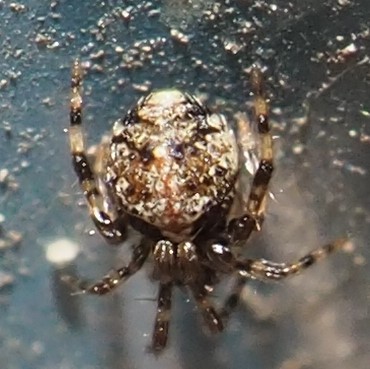
Another cobweb-shaped spider, this time a gorgeous reddish-orange with some bits of black on the face. Picture 3 shows another of those Dwarf Spiders of genus Grammonota.

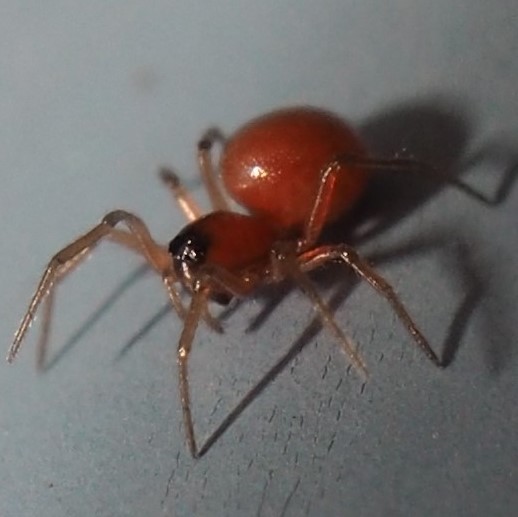
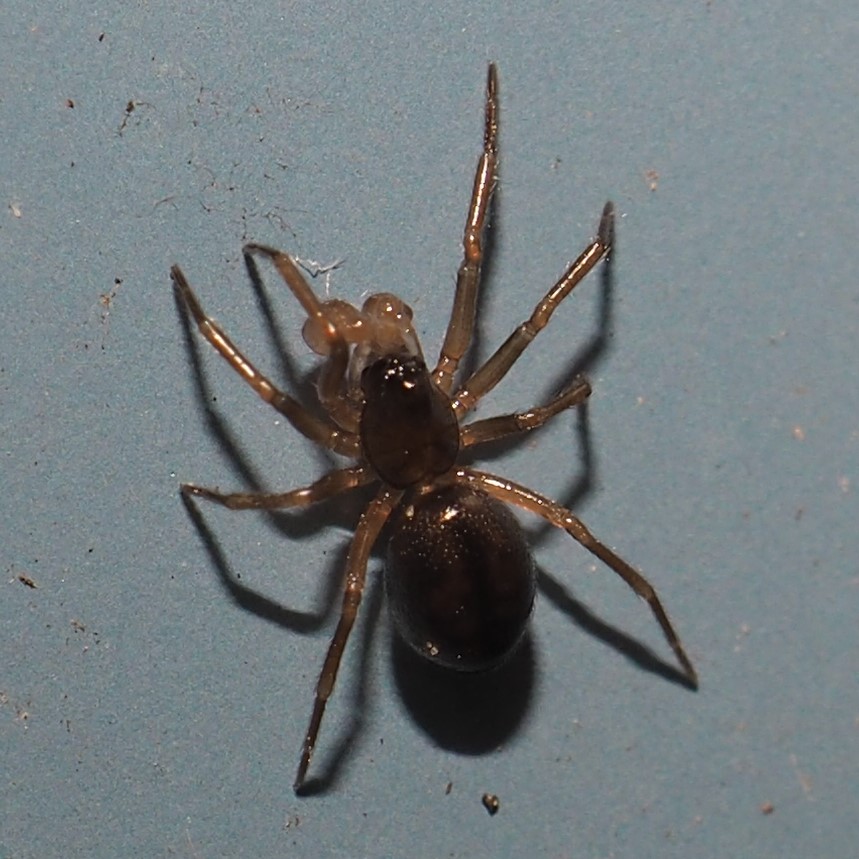
I feel we have been tracking this little Leucauge venusta (Orchard Orbweaver) for ages. Oh. We have been. Again, it started out at about .5 mm, near the threshold of when I can see a dot and suspect it is some tiny creature. It has remained in one spot for a couple of weeks, so we can see its progress. Here is the simplest view. If you only saw this black on white ladder design you would never guess what richness obtains with other views. By the way, if you look at Picture 1 again, you will be able to see what sex she is.
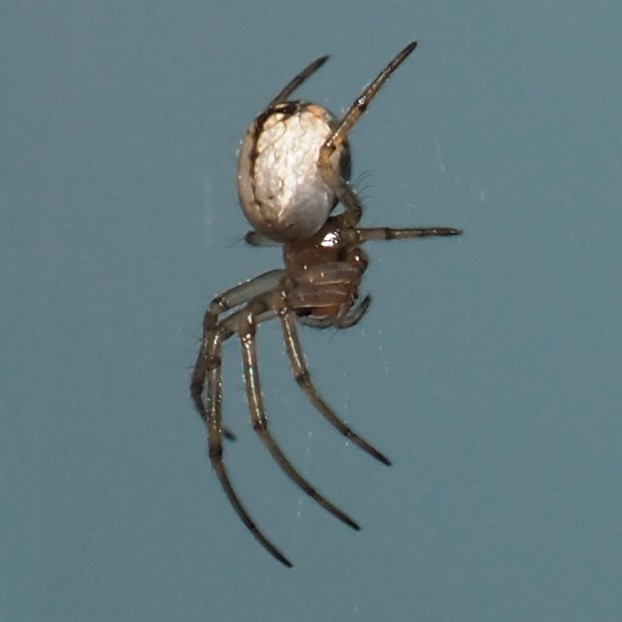
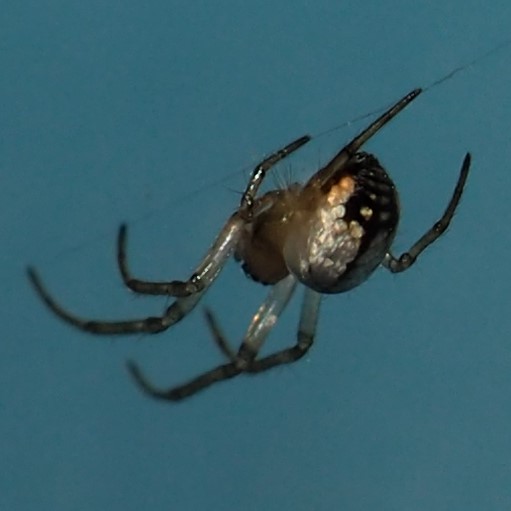
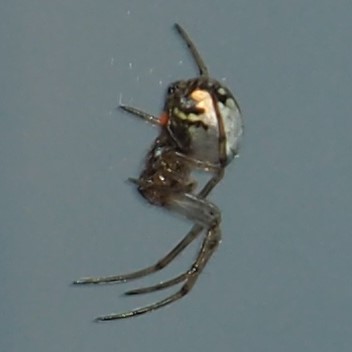
Turn it slightly, until we get to the big bright pink "smile". The last shot is just in case you were worried (as I was) that it wasn't getting enough to eat. Here it is with a nice-sized prey.

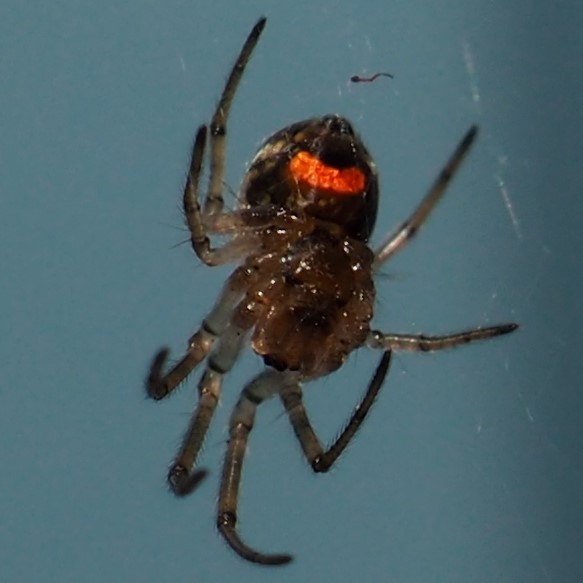
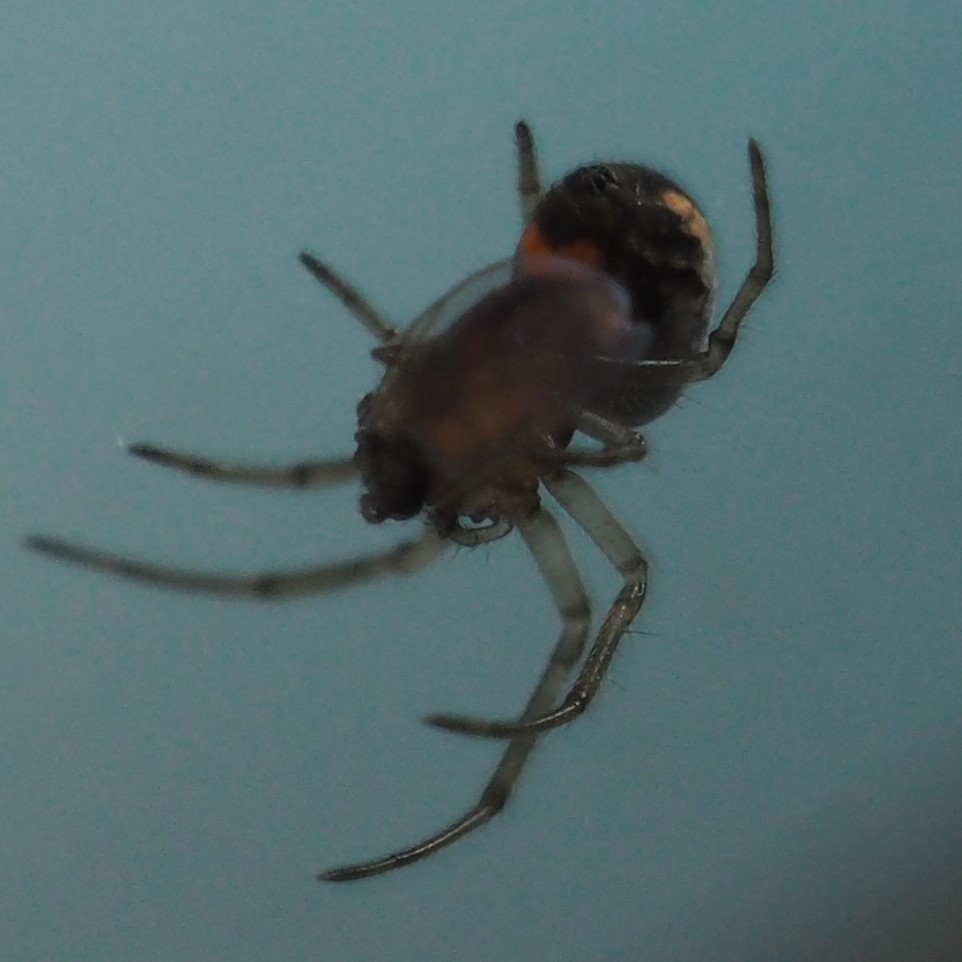
Here is another little unidentified spider (unless it's another Common House Spider) and its shadow. In the next image, doesn't it look like a ballerina twirling? Picture 3 - we were suddenly revisited by that nice red True Velvet Mite (genus Trombidium).
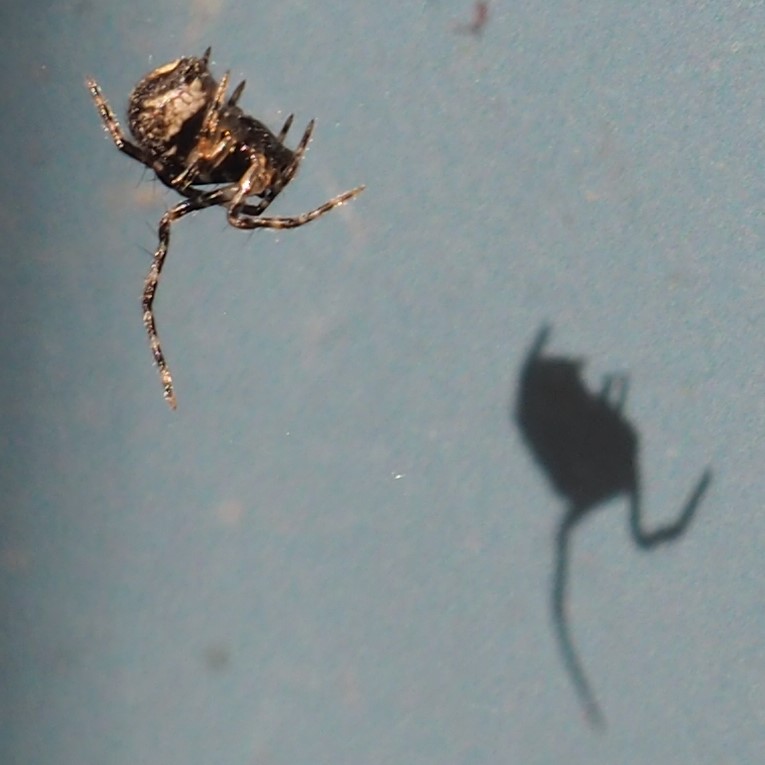
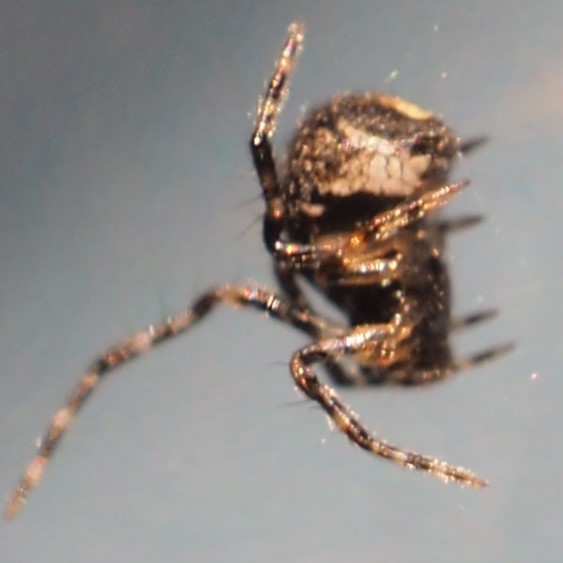
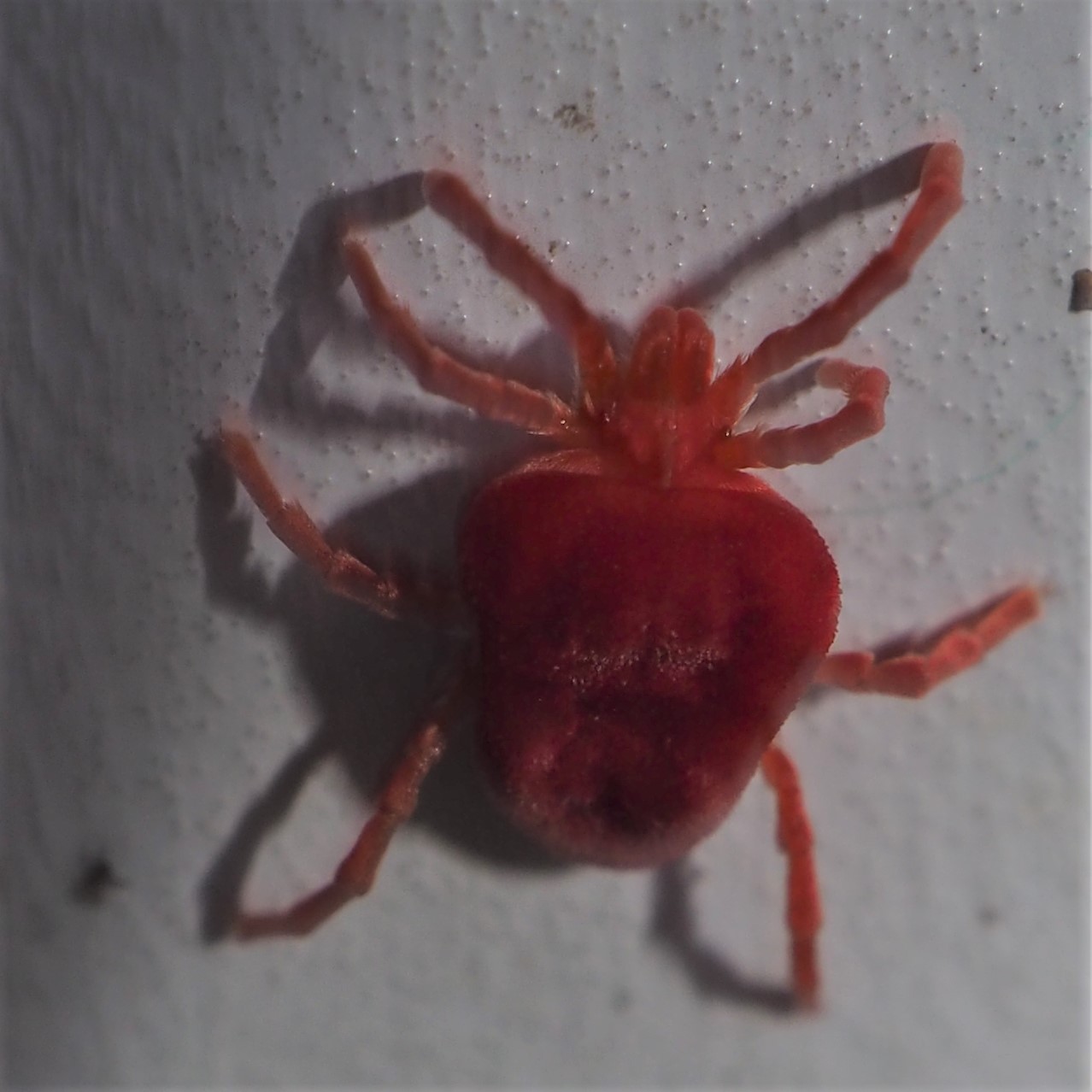
The fishes are even more active. I've removed their precious heater - even though it snowed last night. It was in the low 50's in the morning and so no frost problem. Here they are nibbling off the bottom in shallow water. Picture 3 - Oh no! There's an alligator lurking off the edge of the pond. Actually his head is used to steady the hose that a raccoon could otherwise use to pump all the water out of the pond and possibly kill off all the fish, as happened many years ago. Pinky (the large bright white and red fish in the right forefront of Picture 1) was the sole survivor of such an accident many years back.
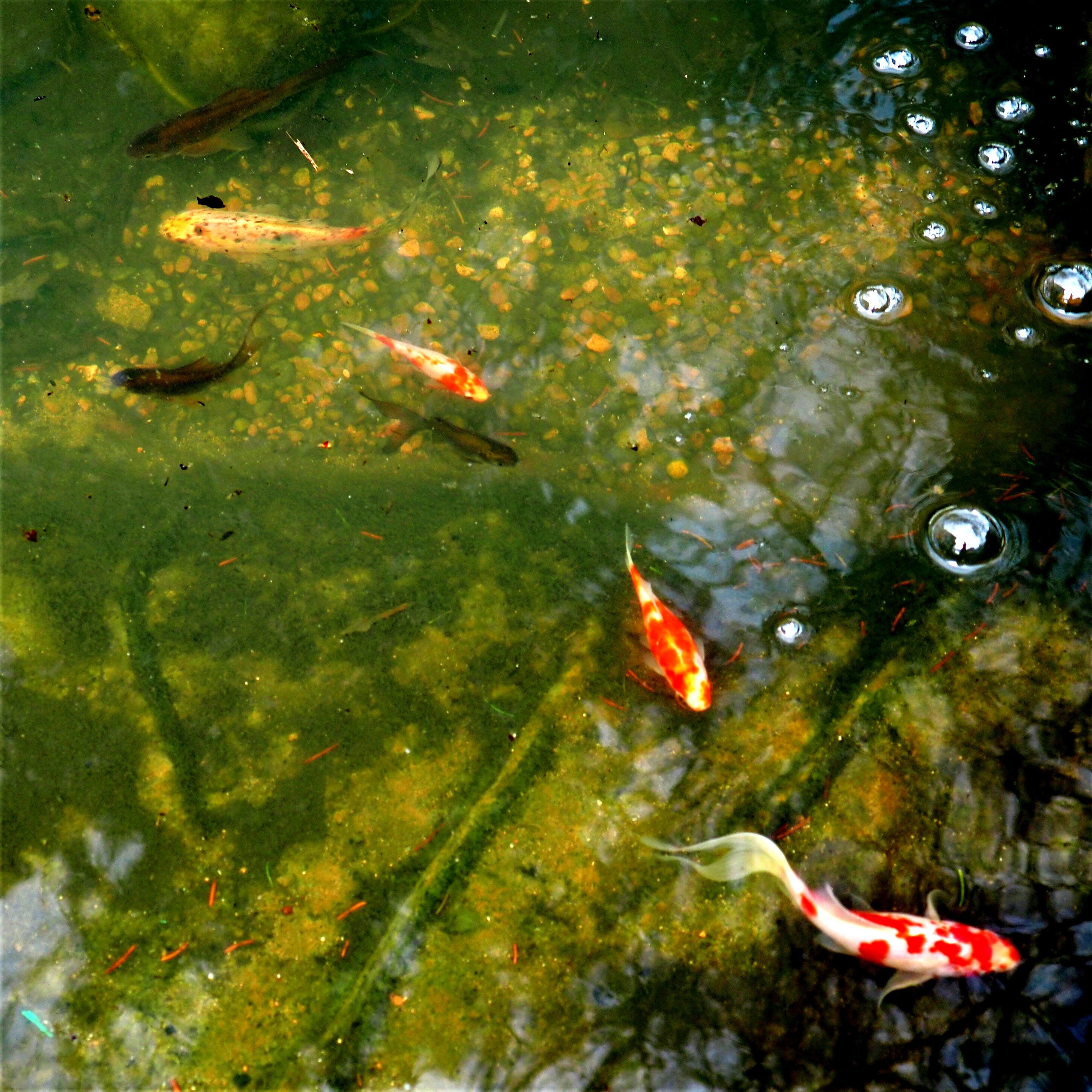
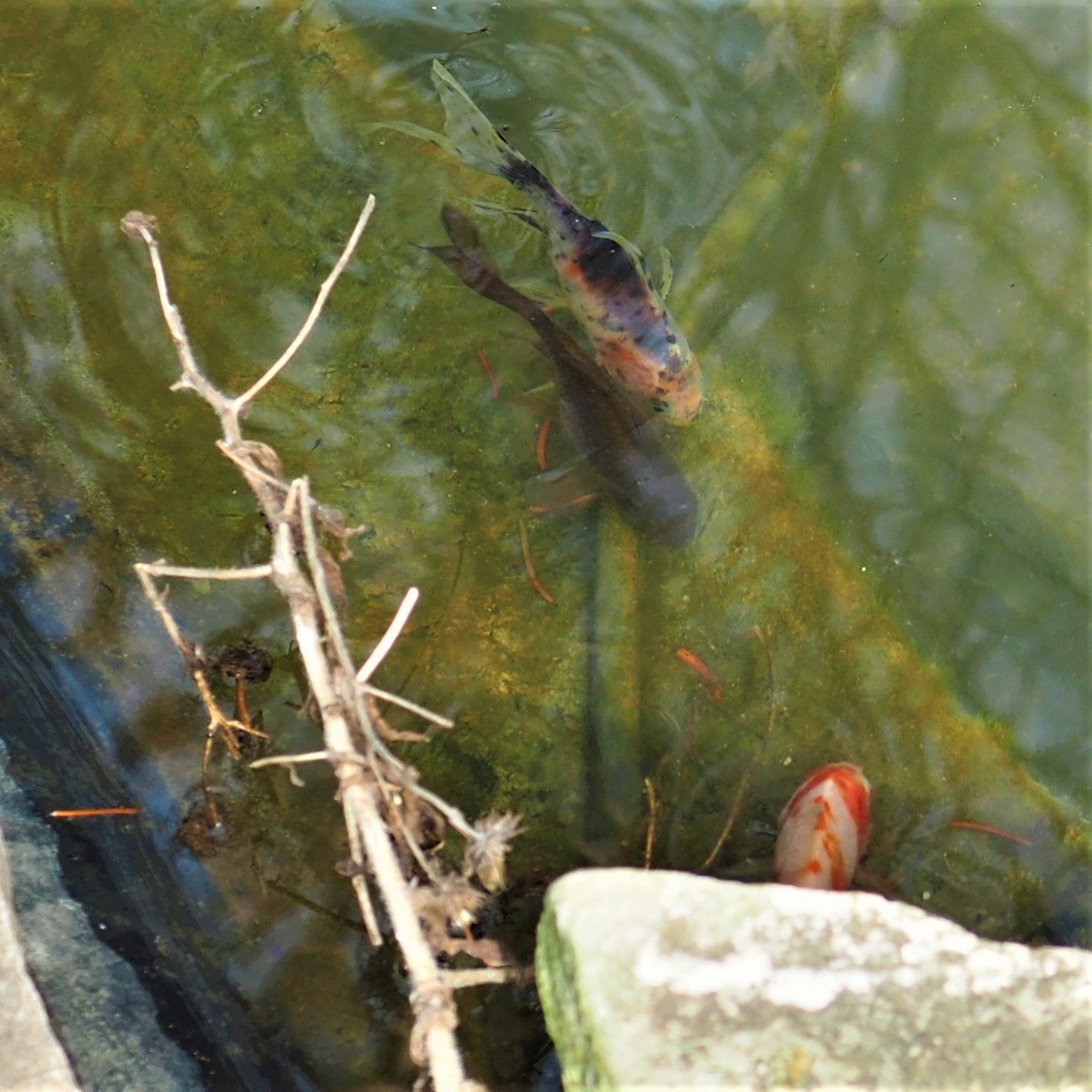
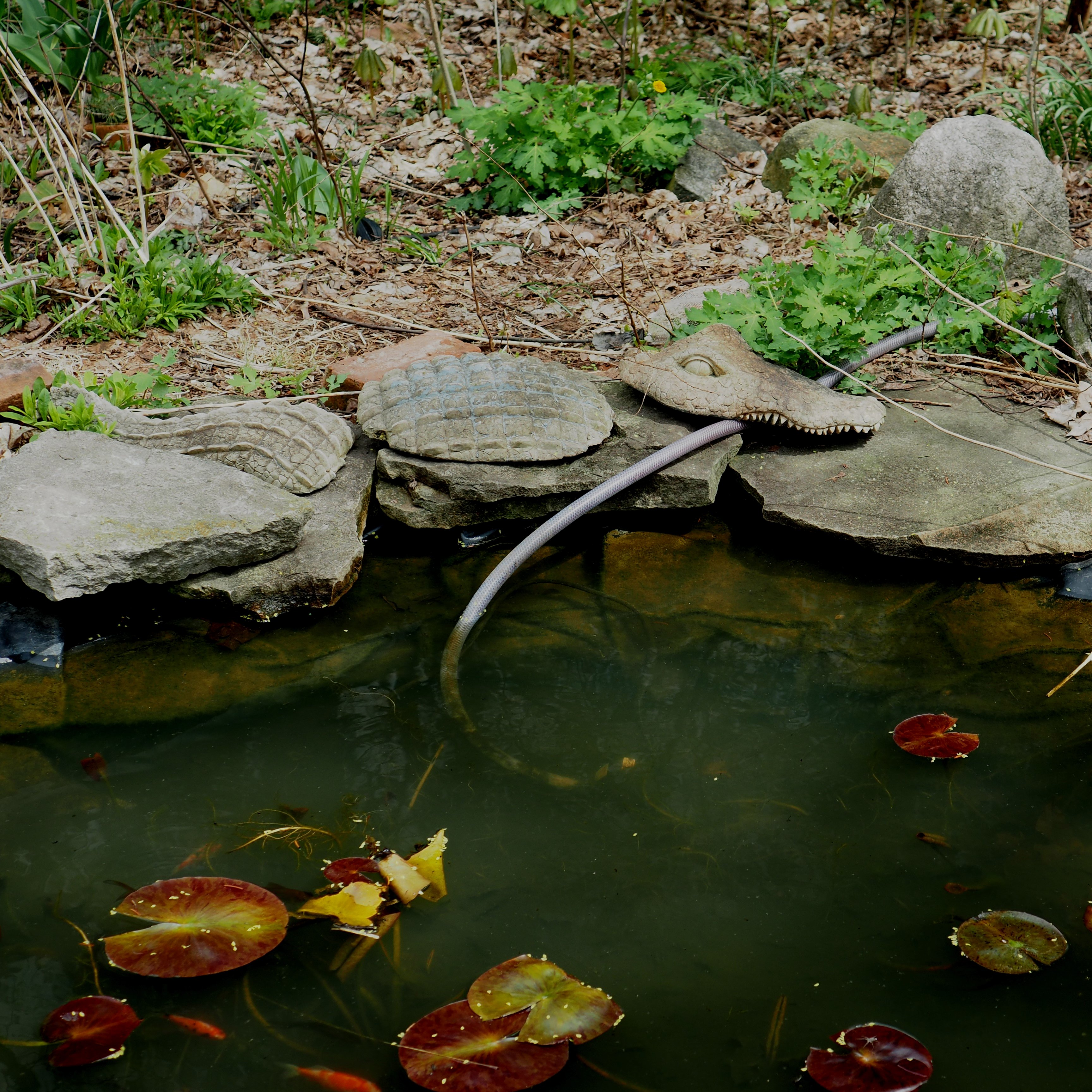
I'll leave you now watching the tulips and the grape hyacinths along the sidewalk leading to the house.
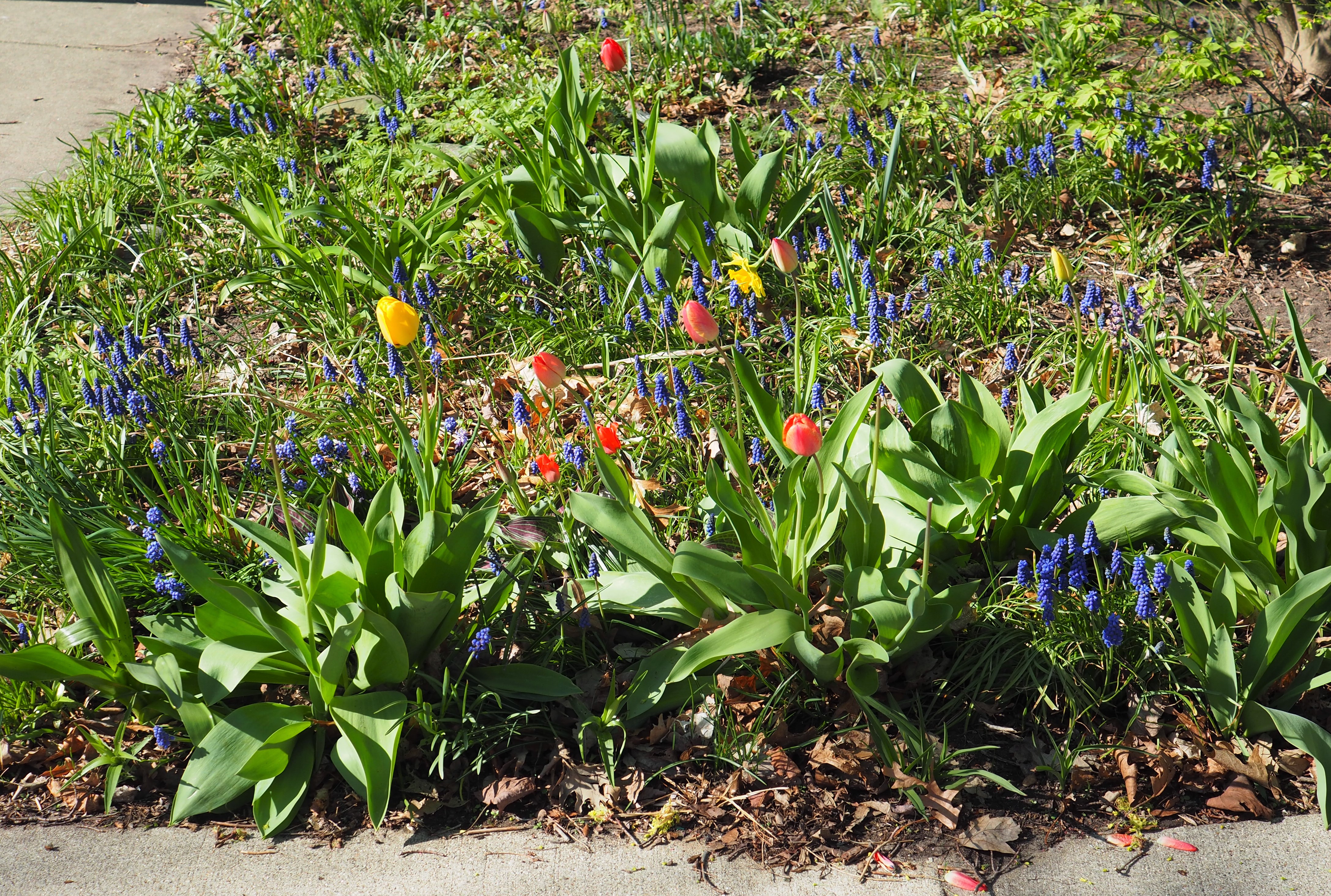
So good wishes to everyone as April finishes with a grand tulip and grape hyacinth bow. I can't believe it!
Love, Martha
Back to April 21, 2019
Forward to May 5, 2019
Back to main menu
copyright Martha O'Kennon 2019











































































